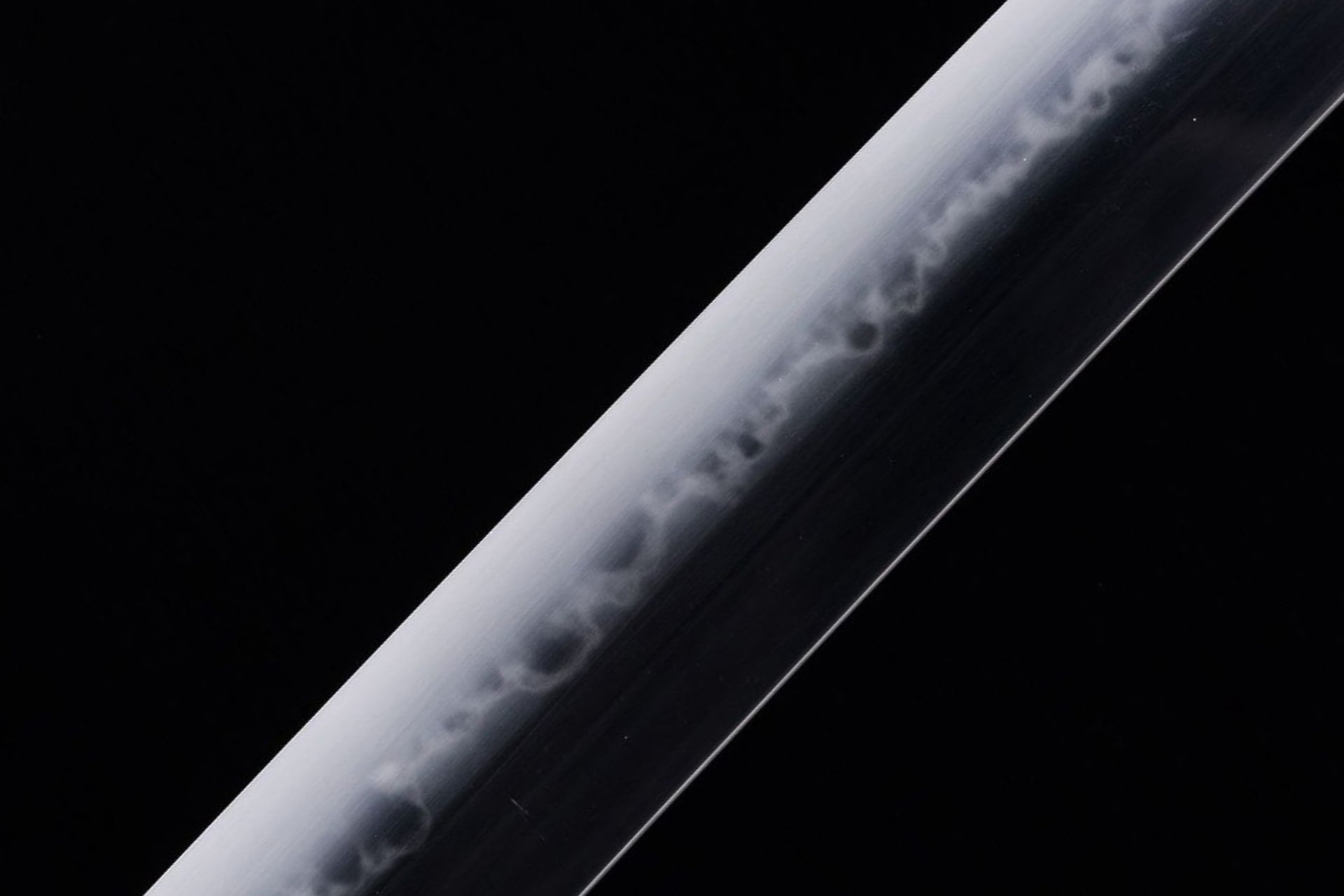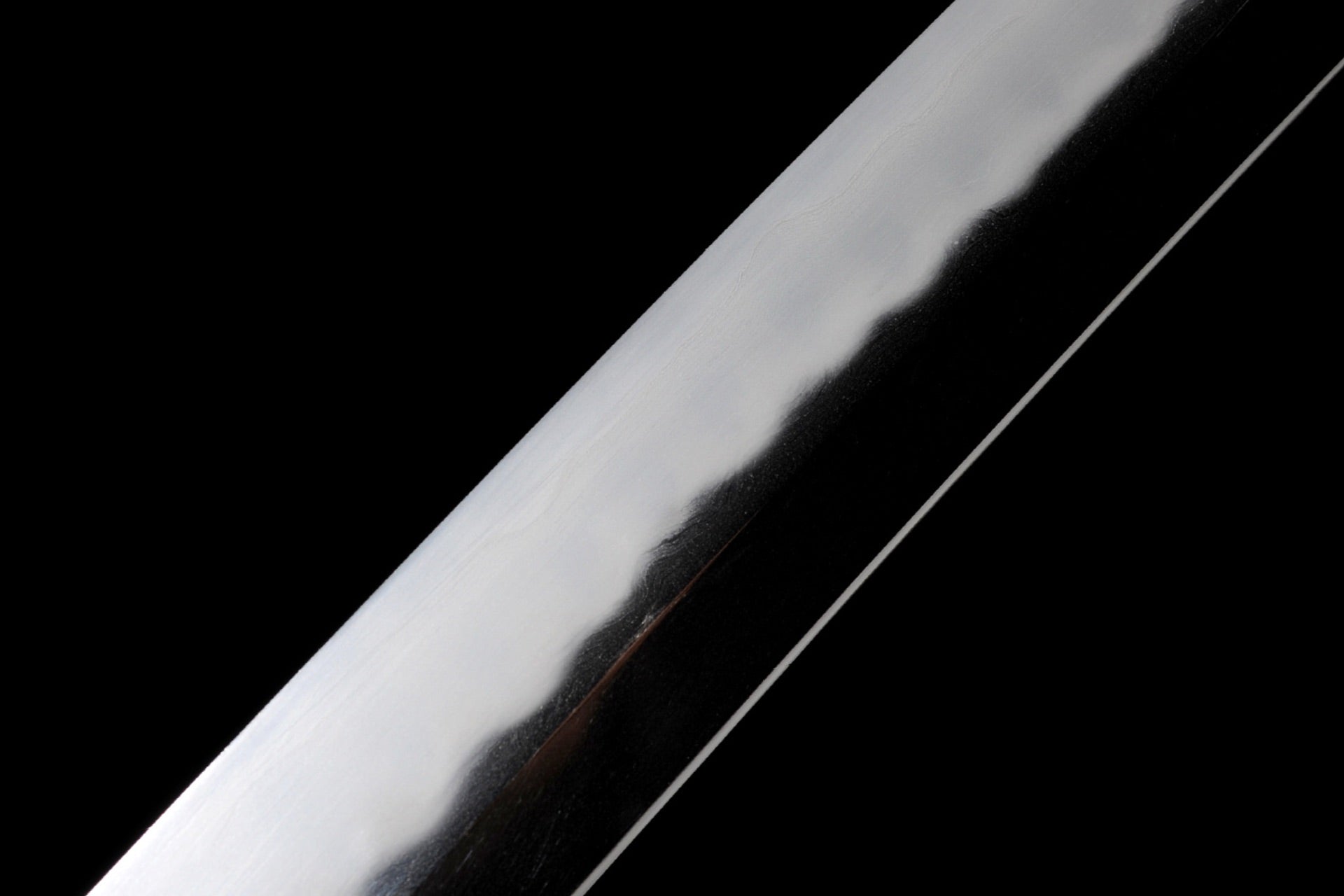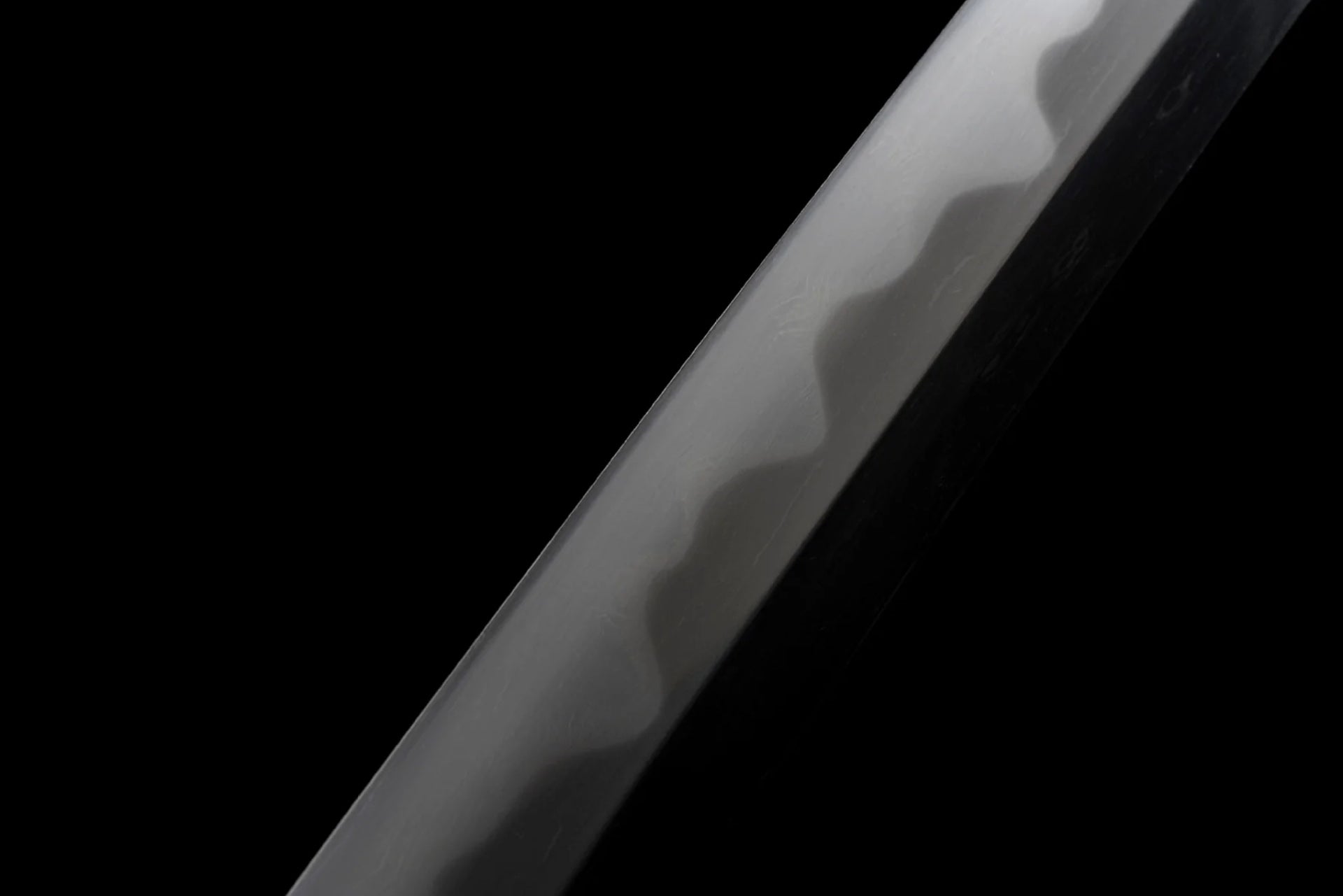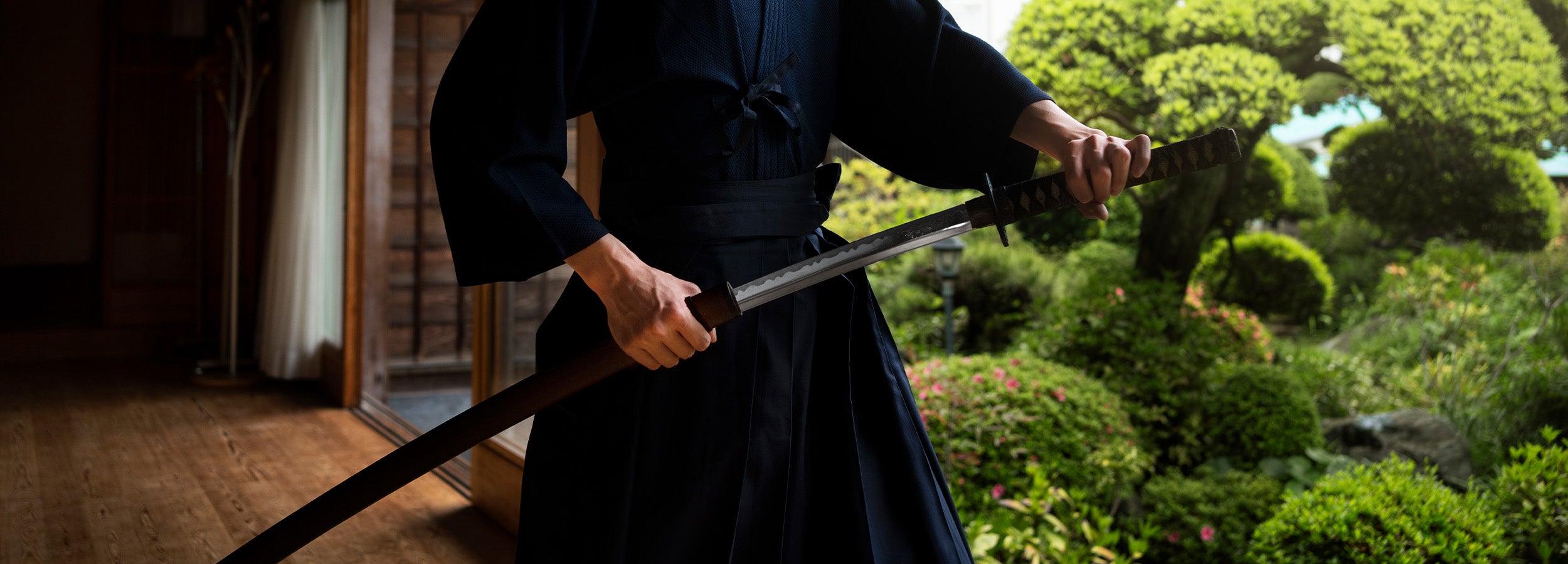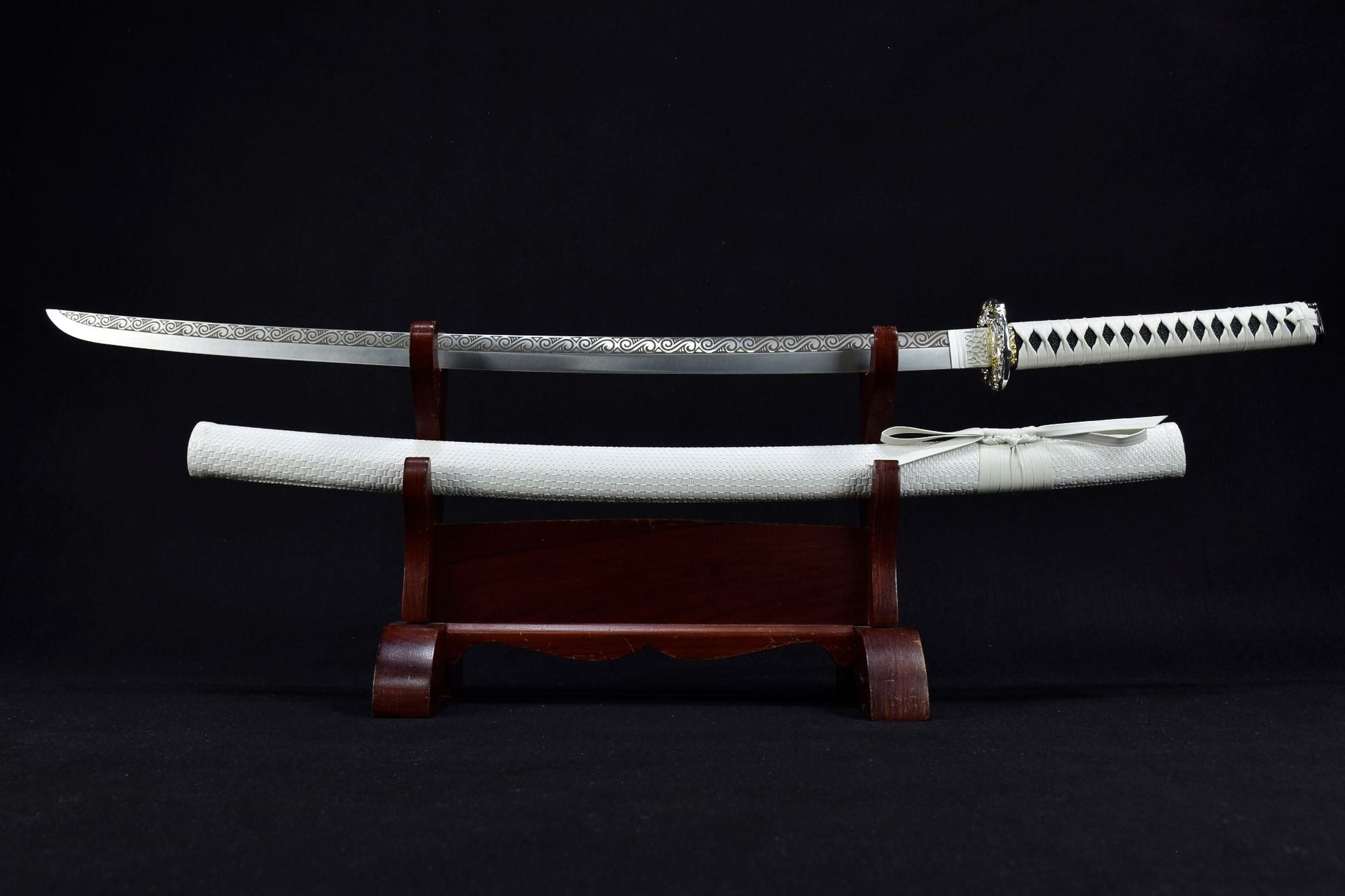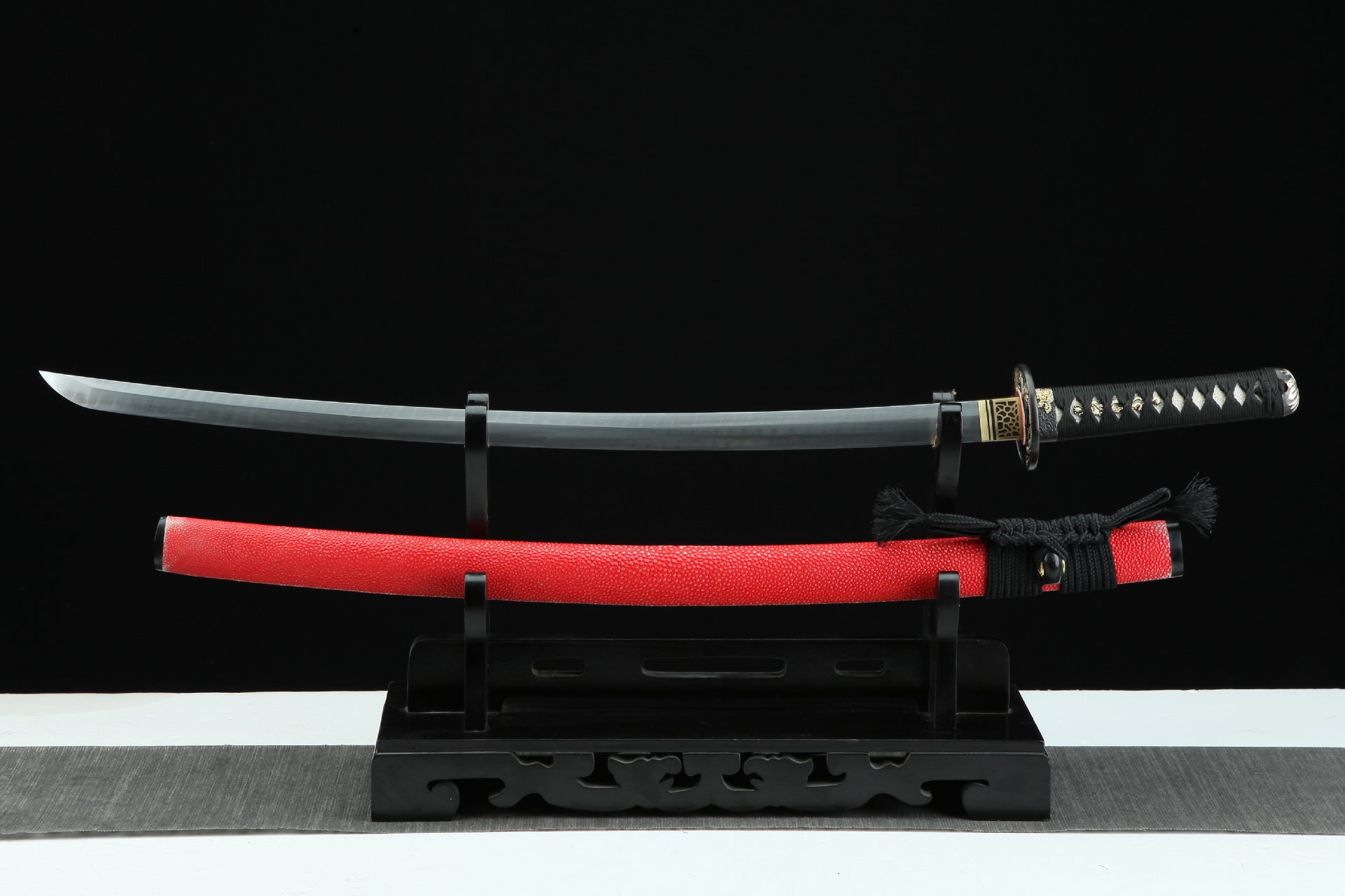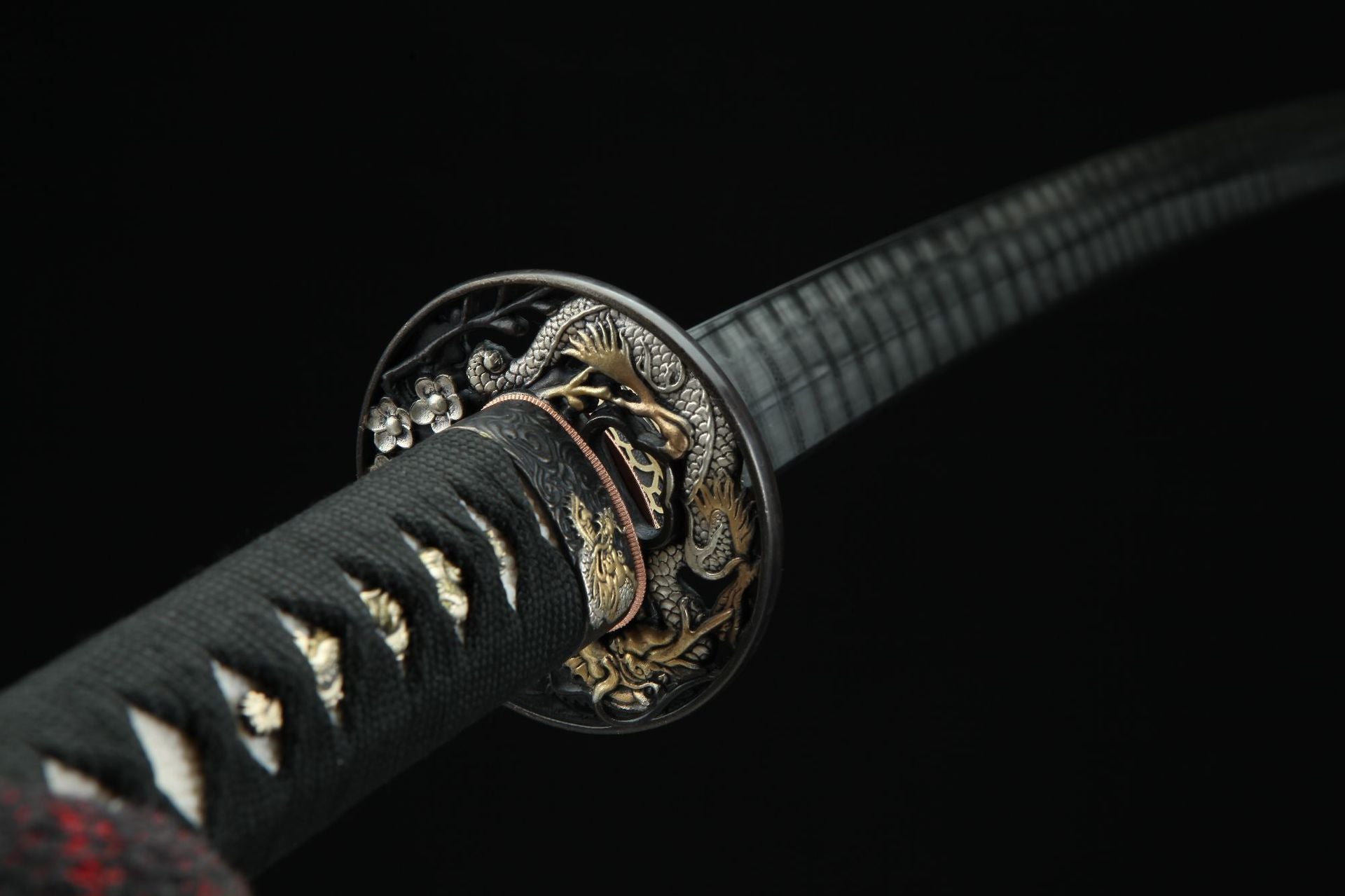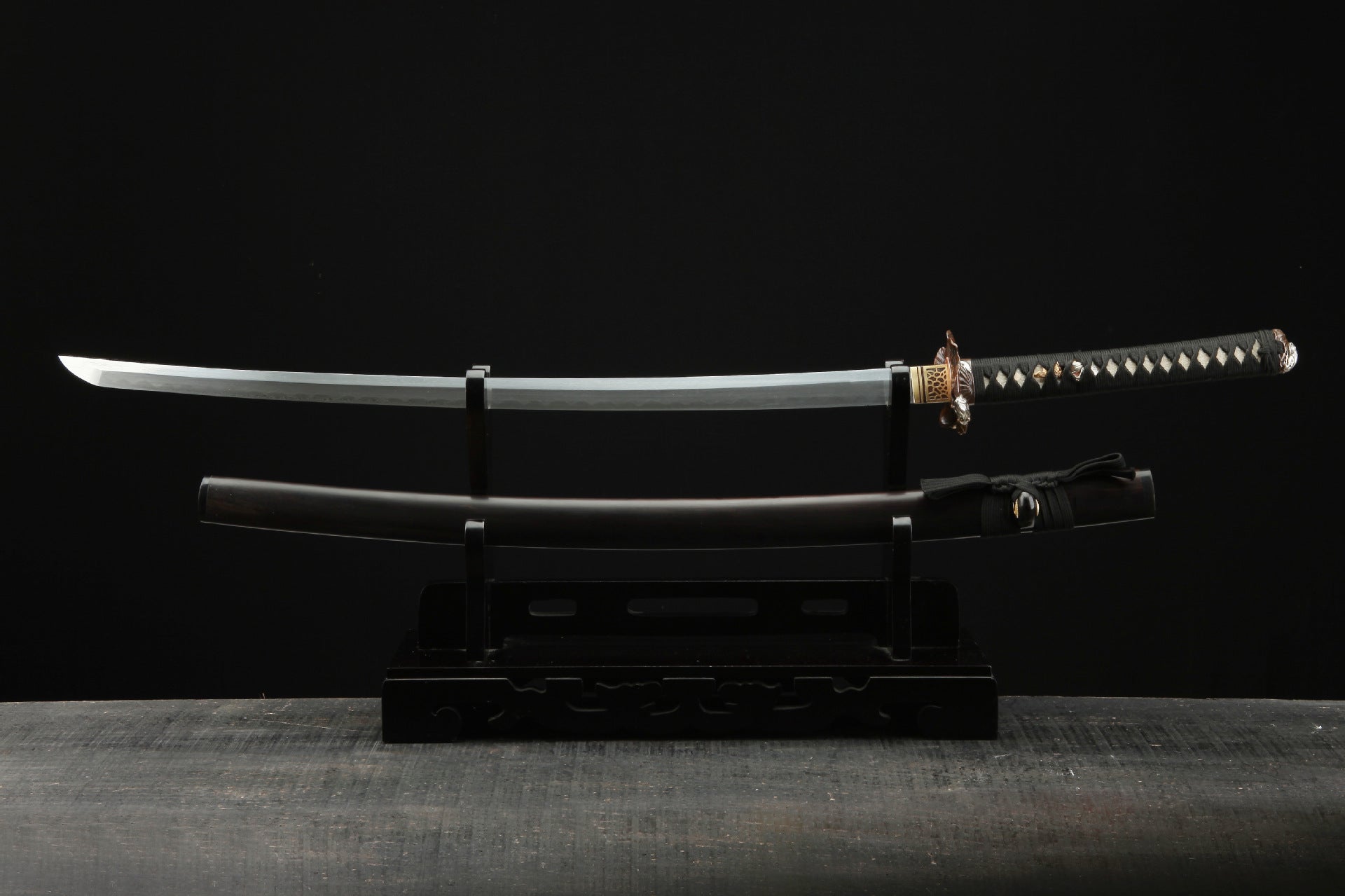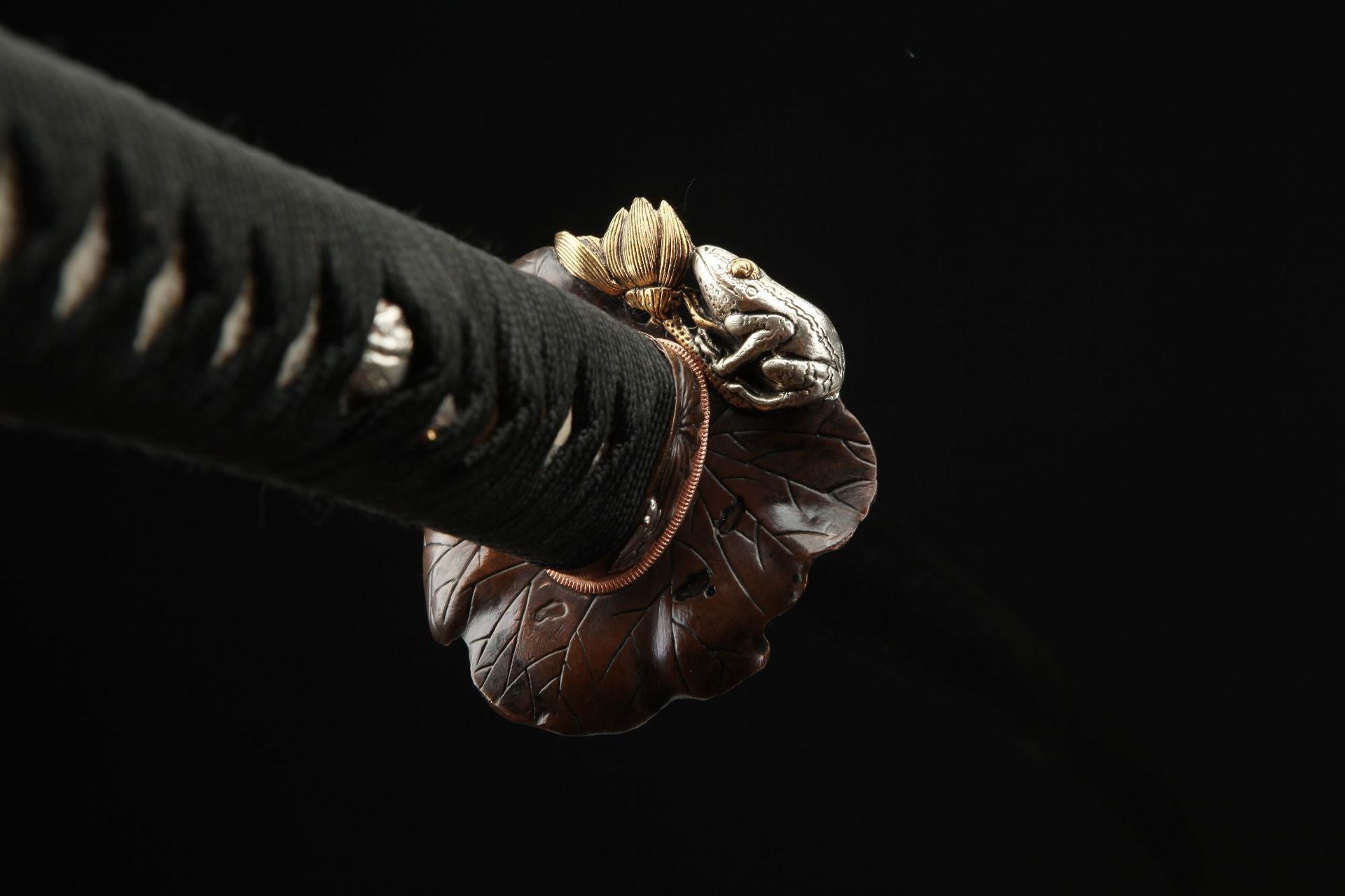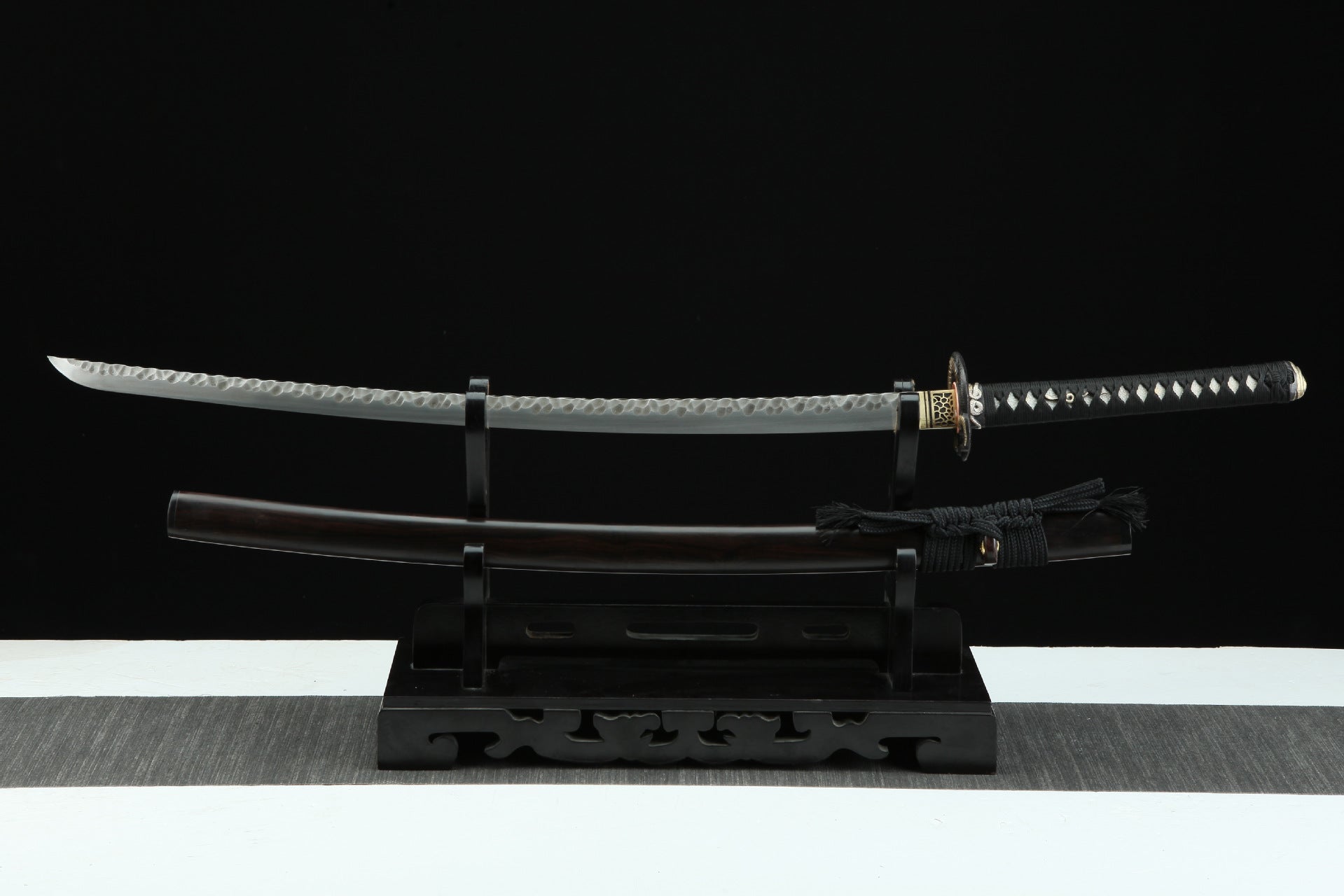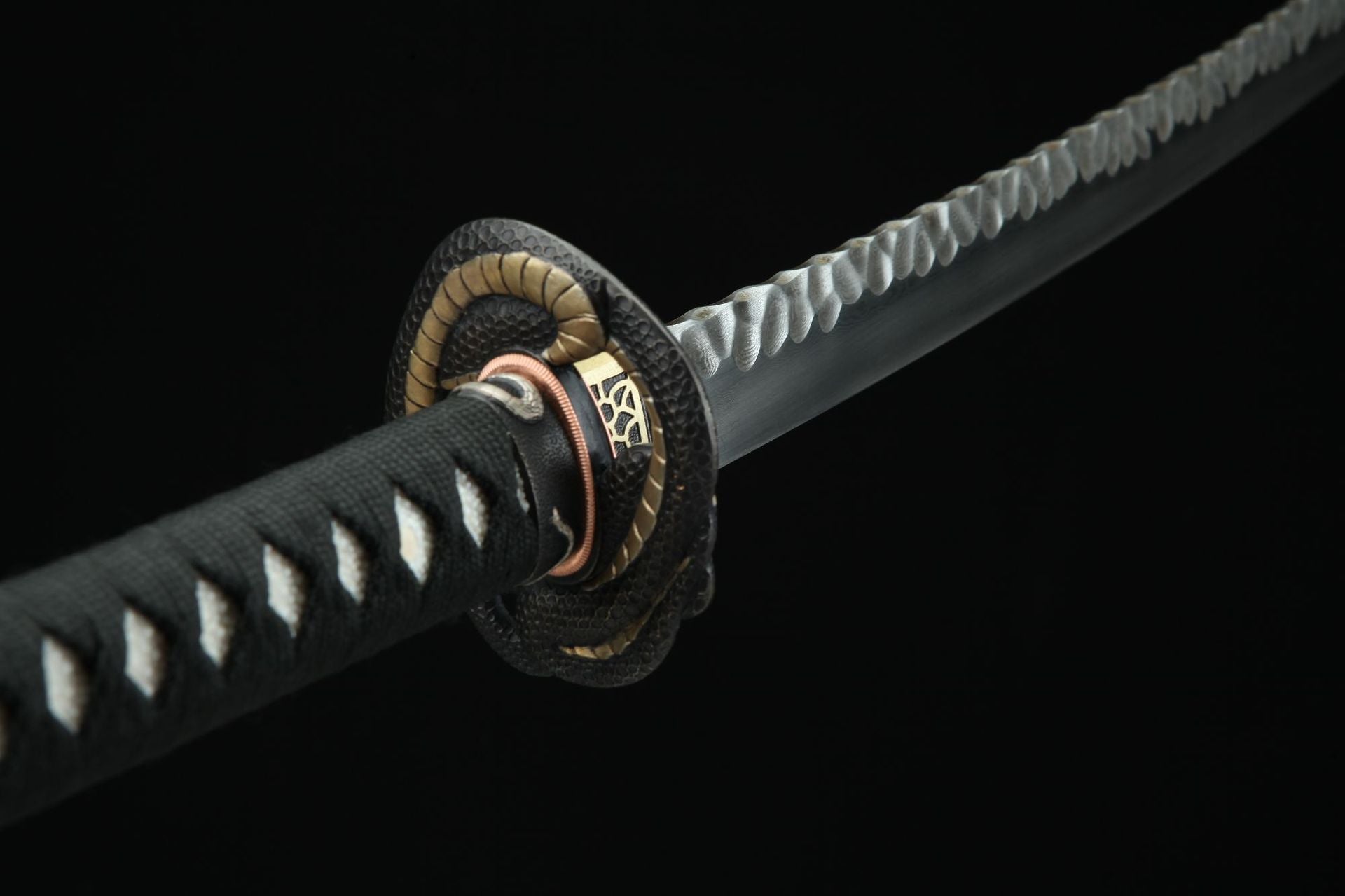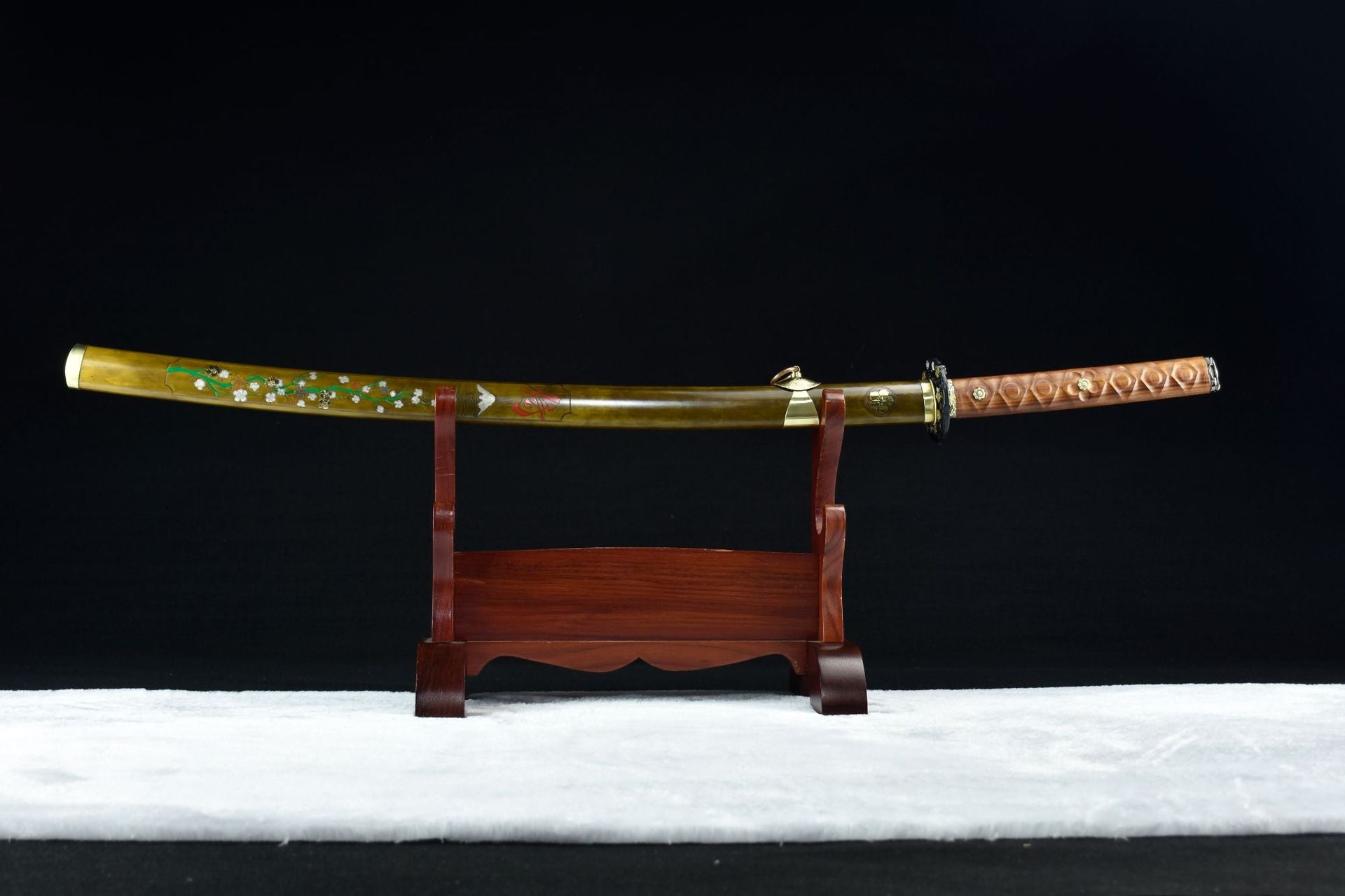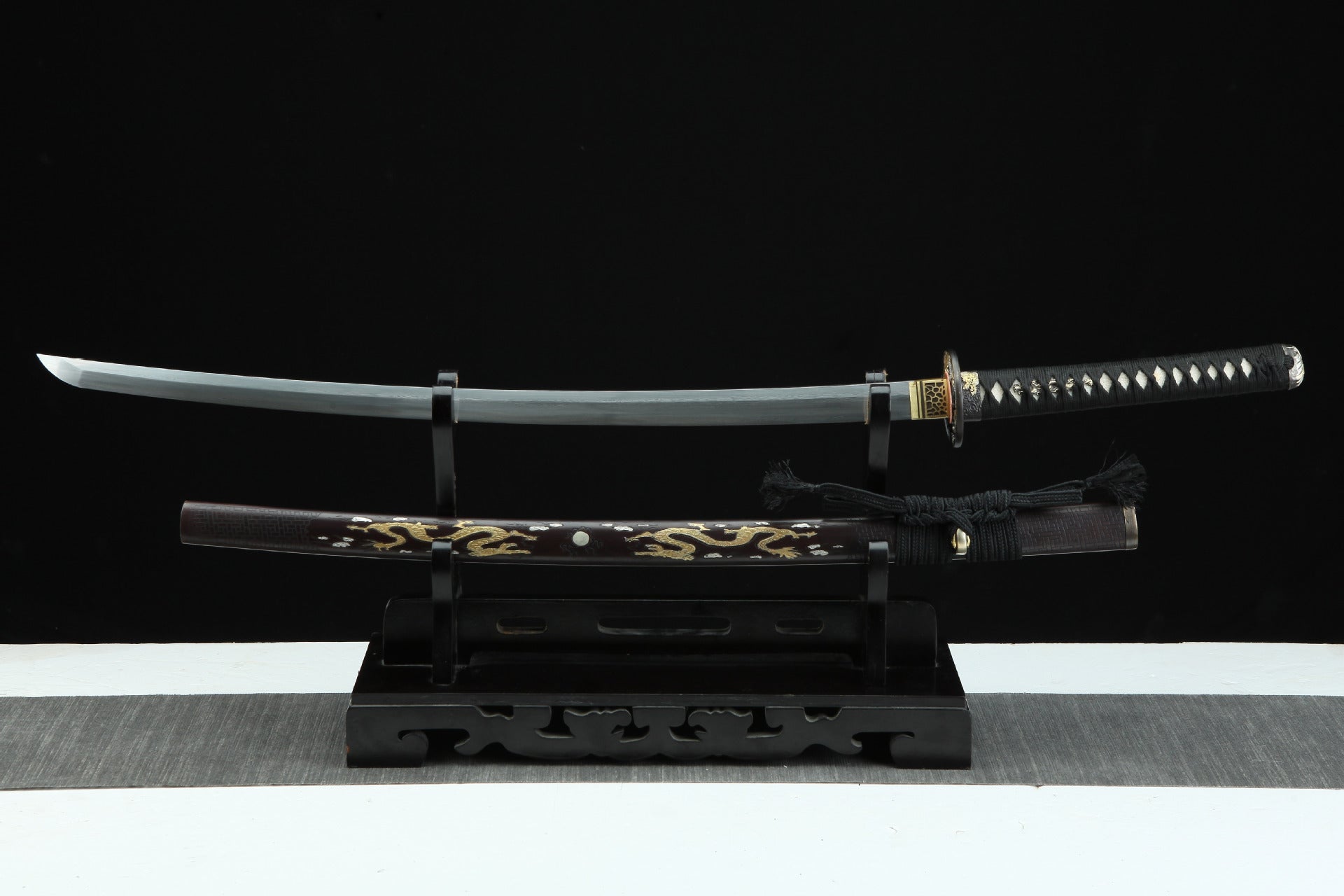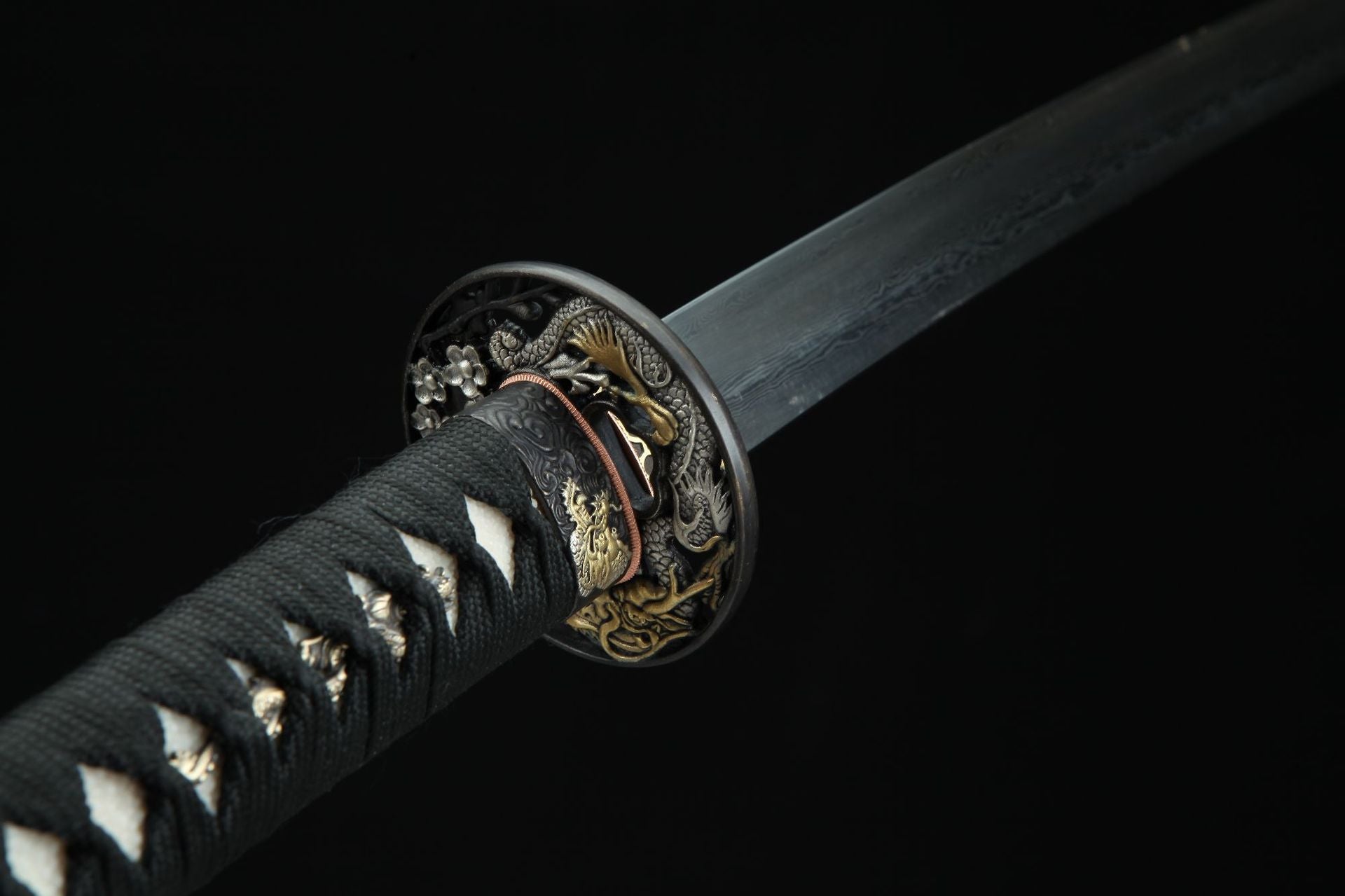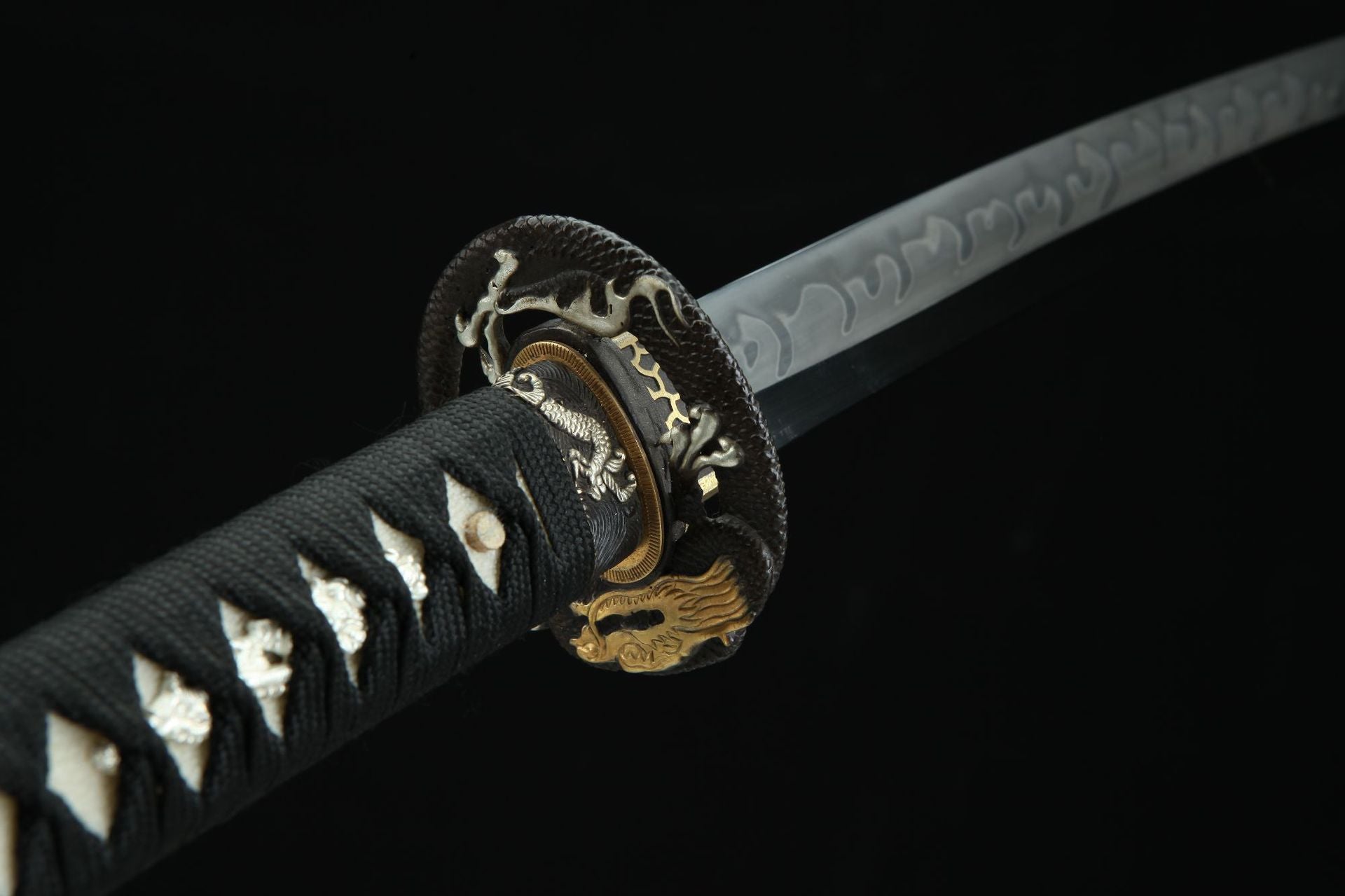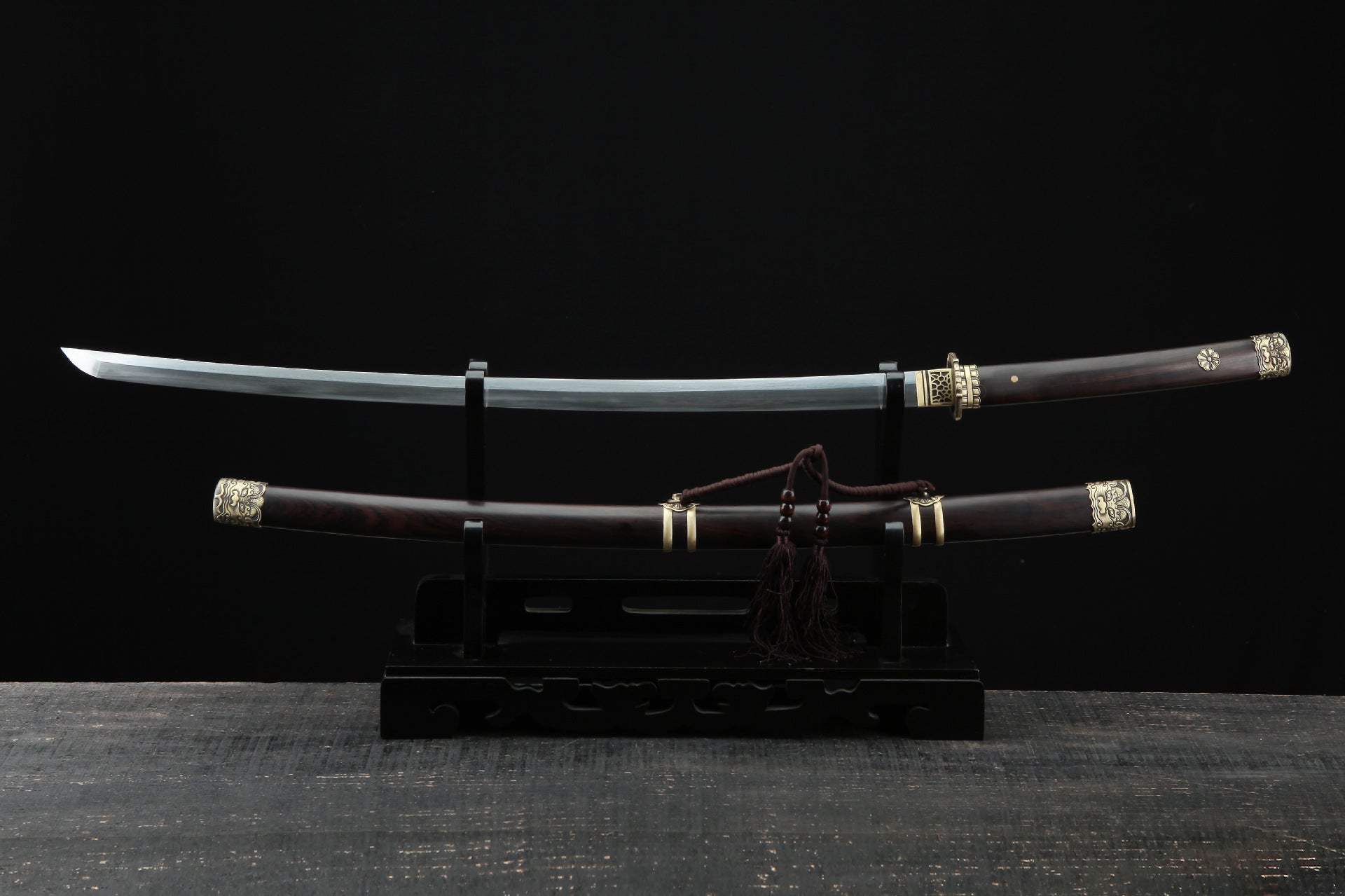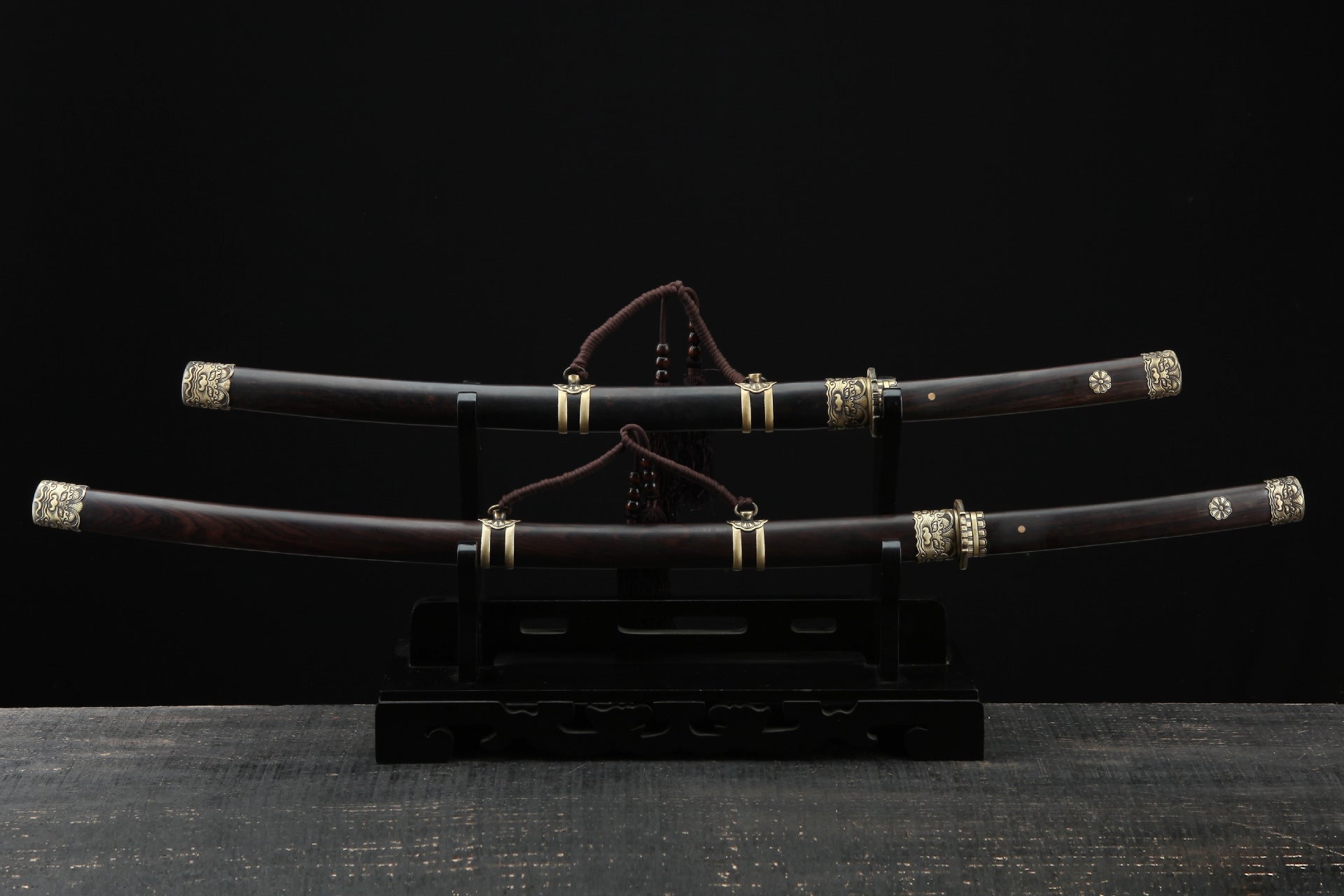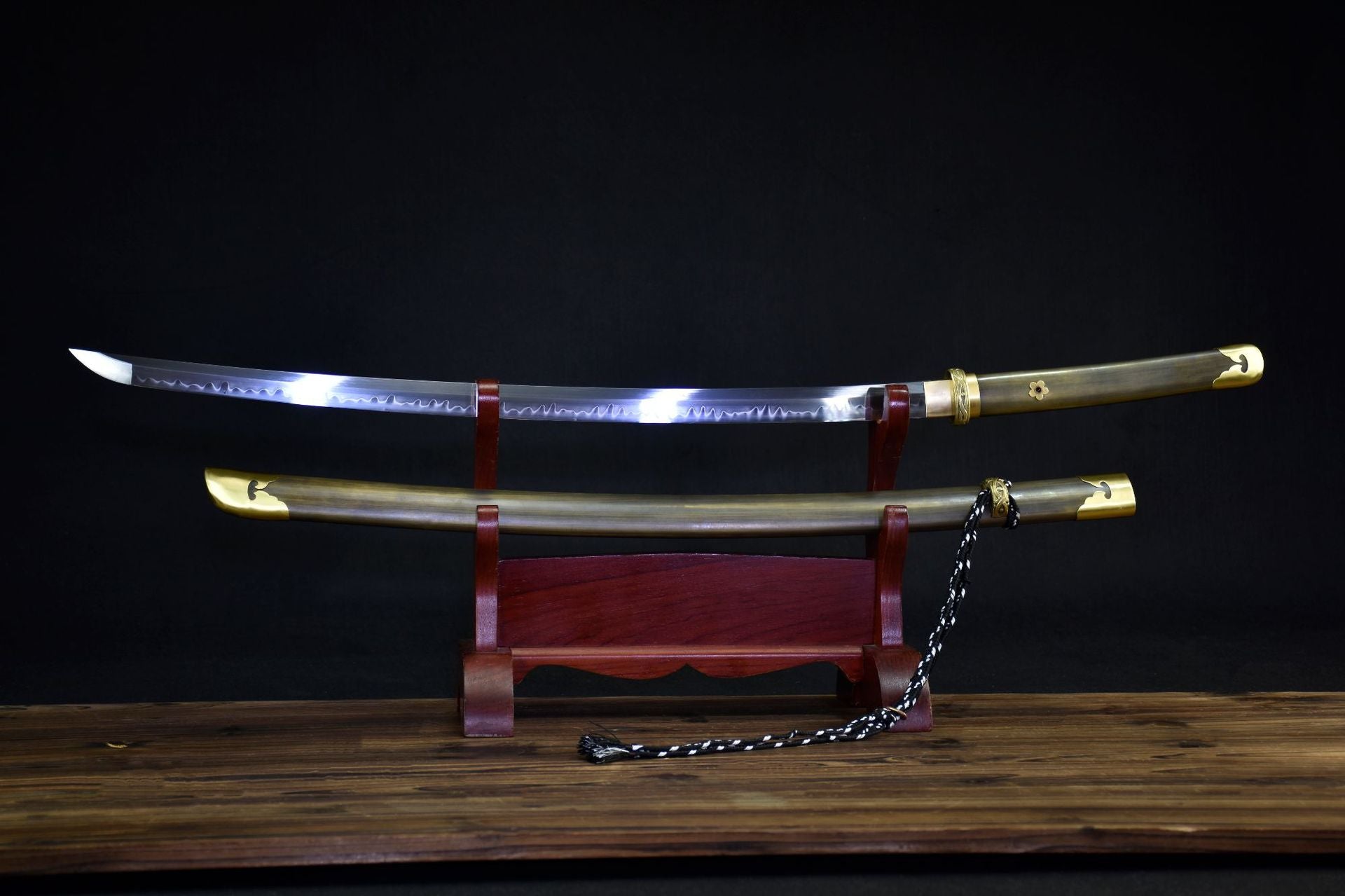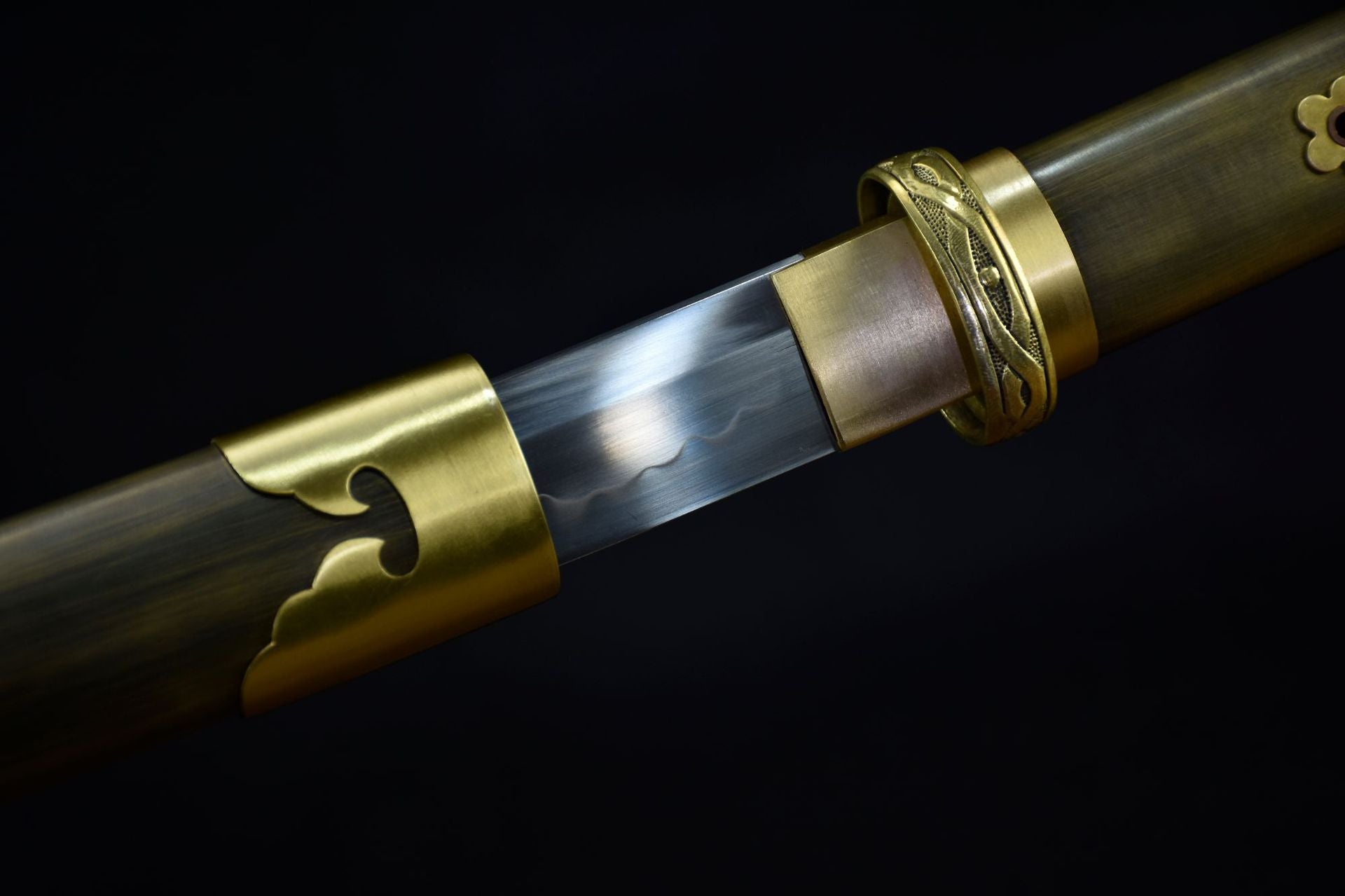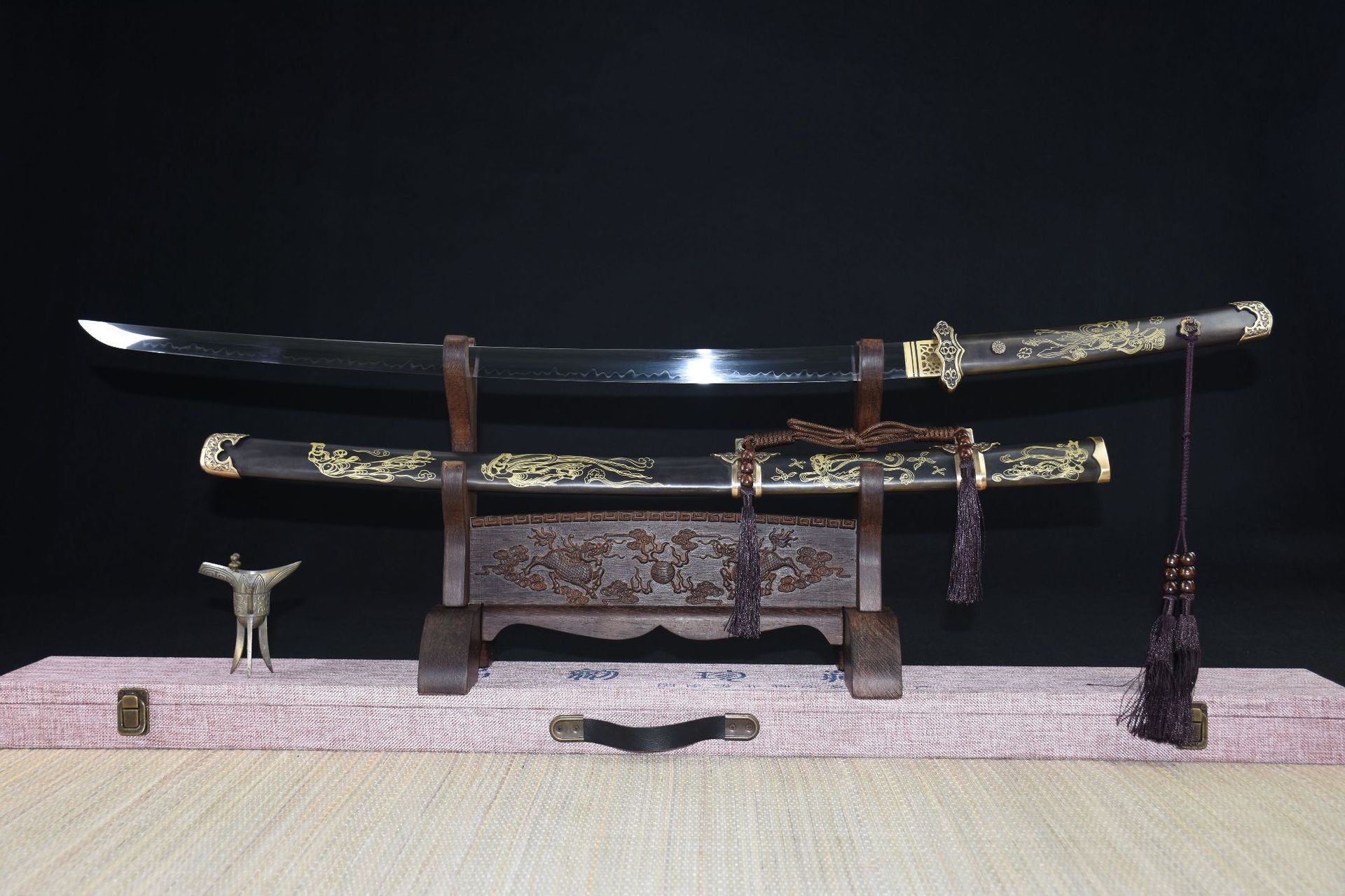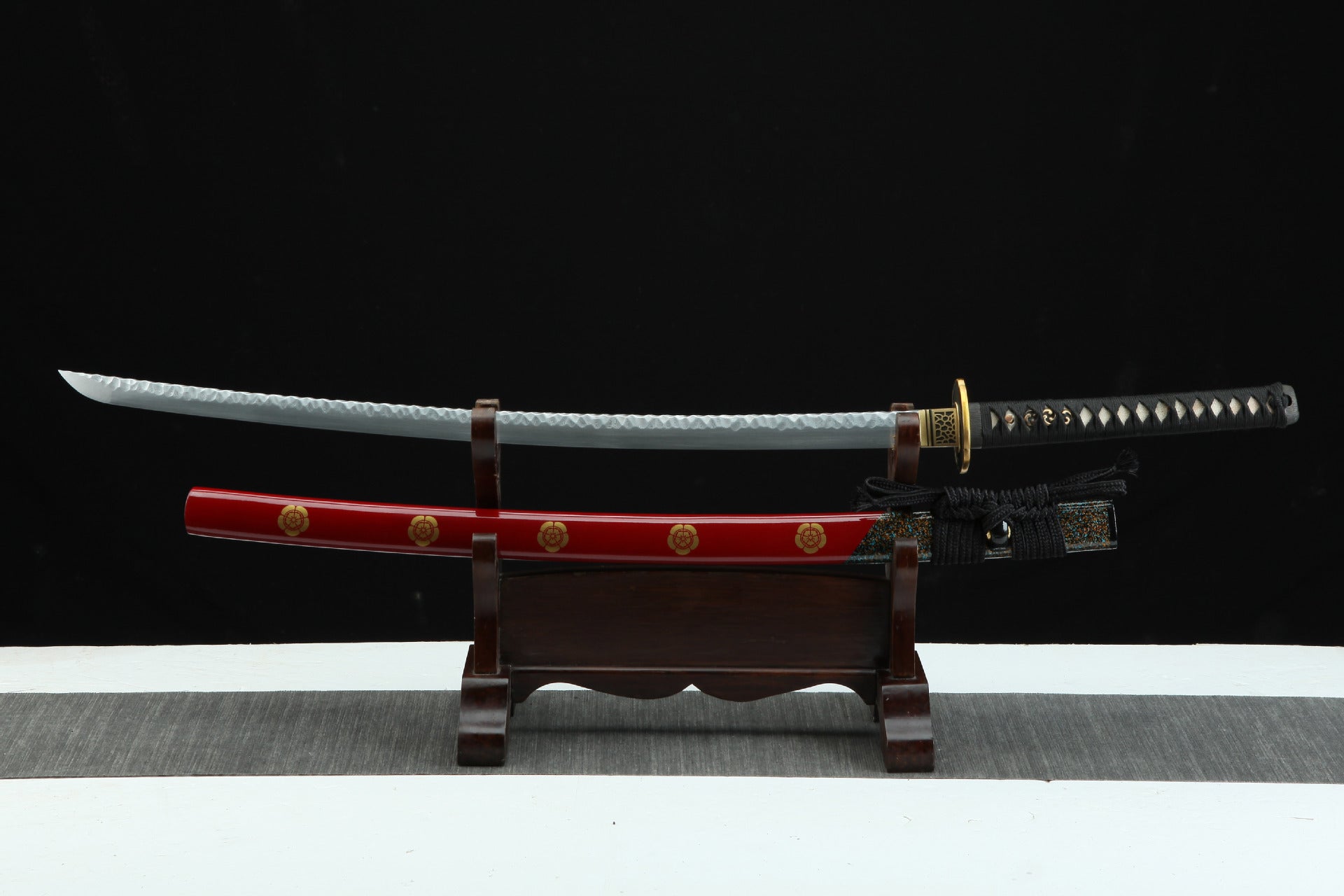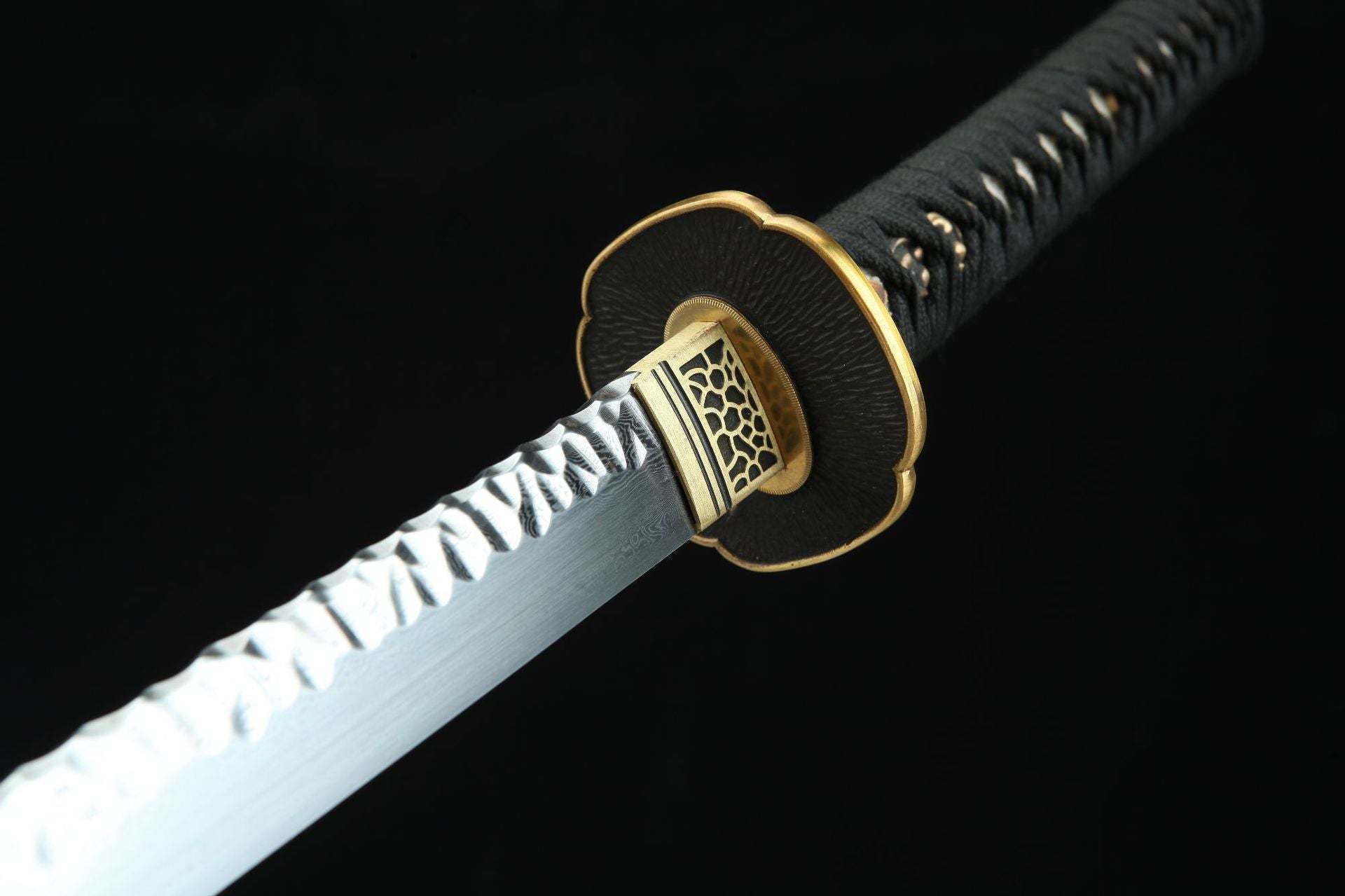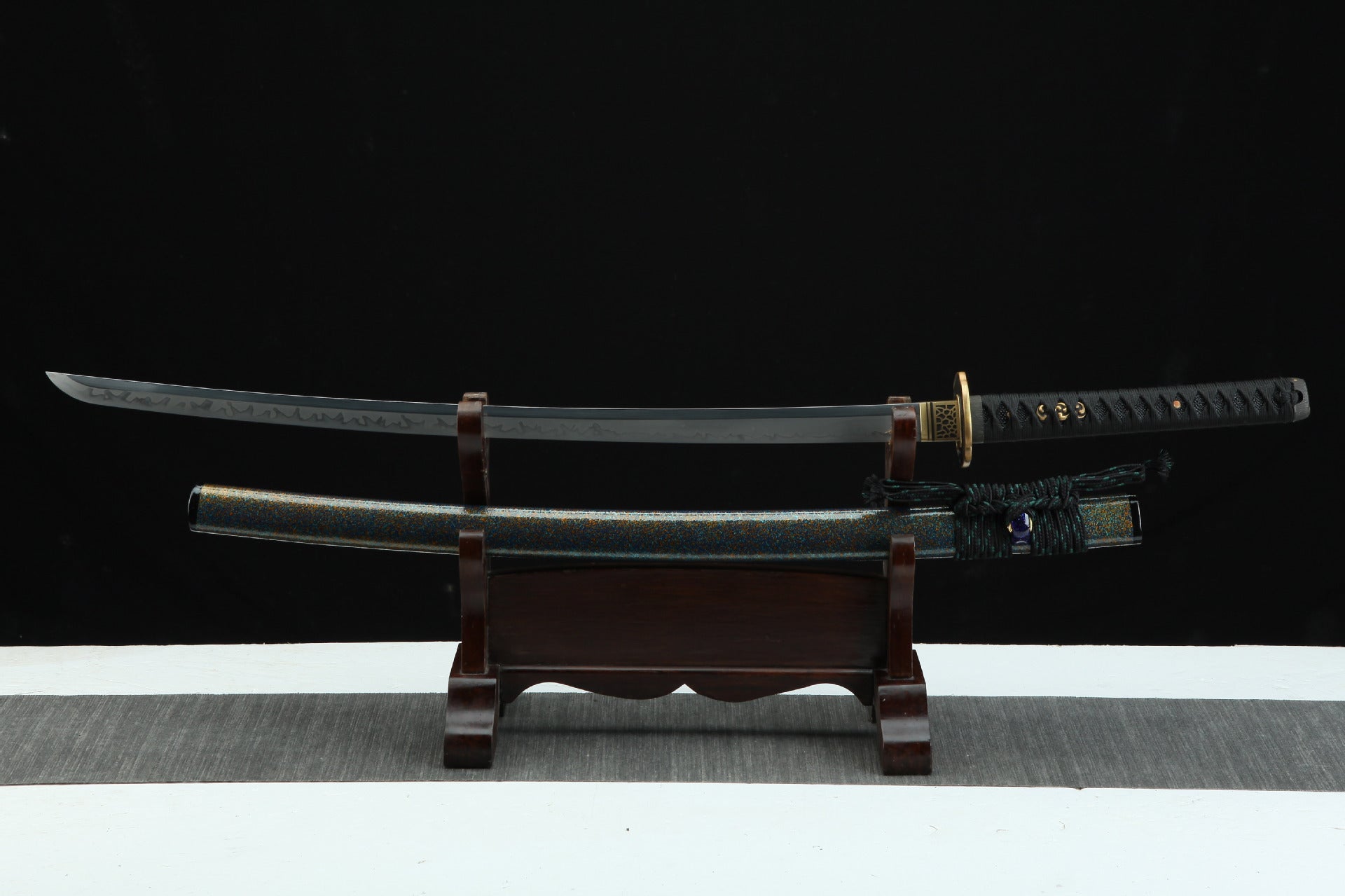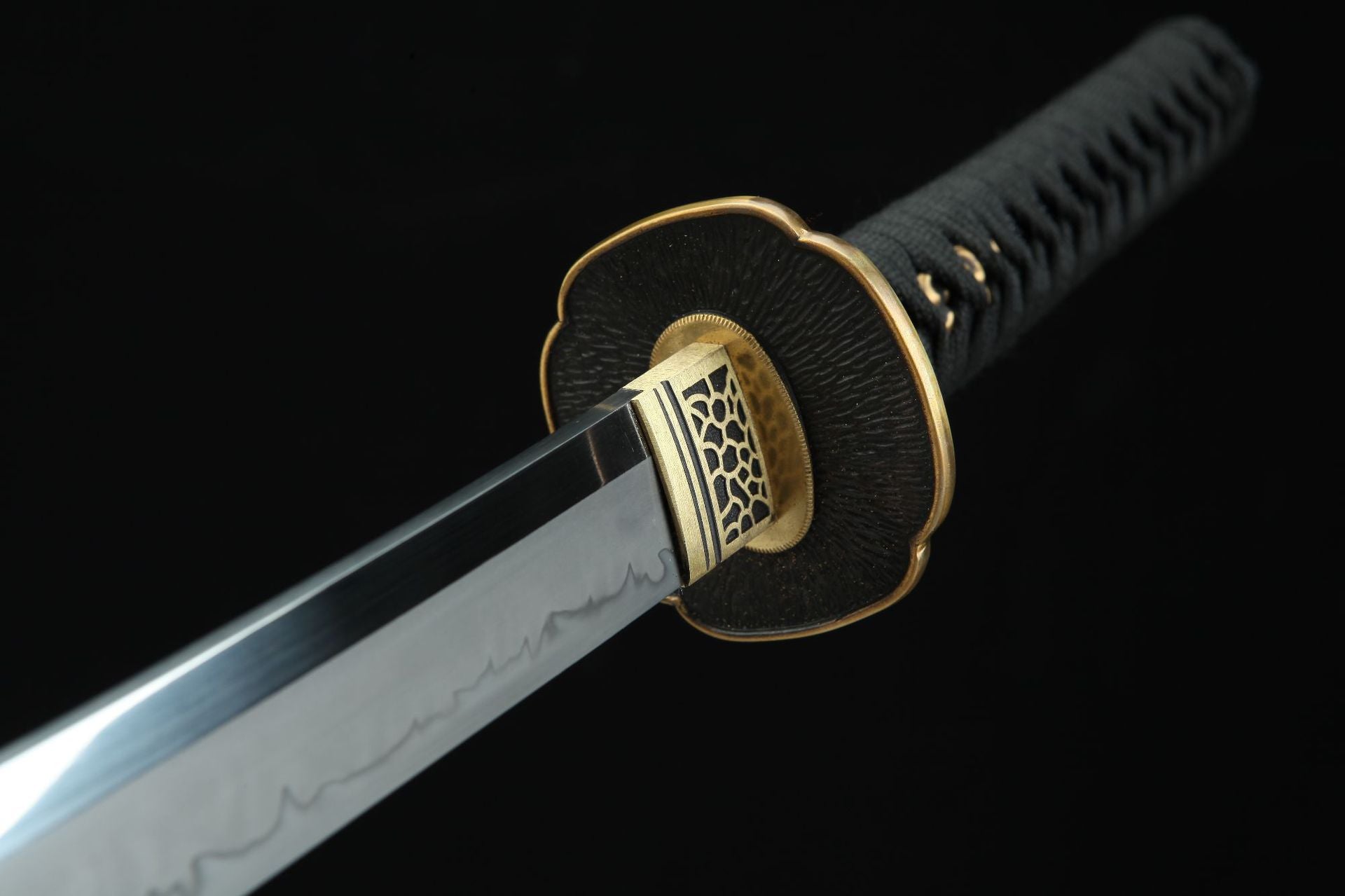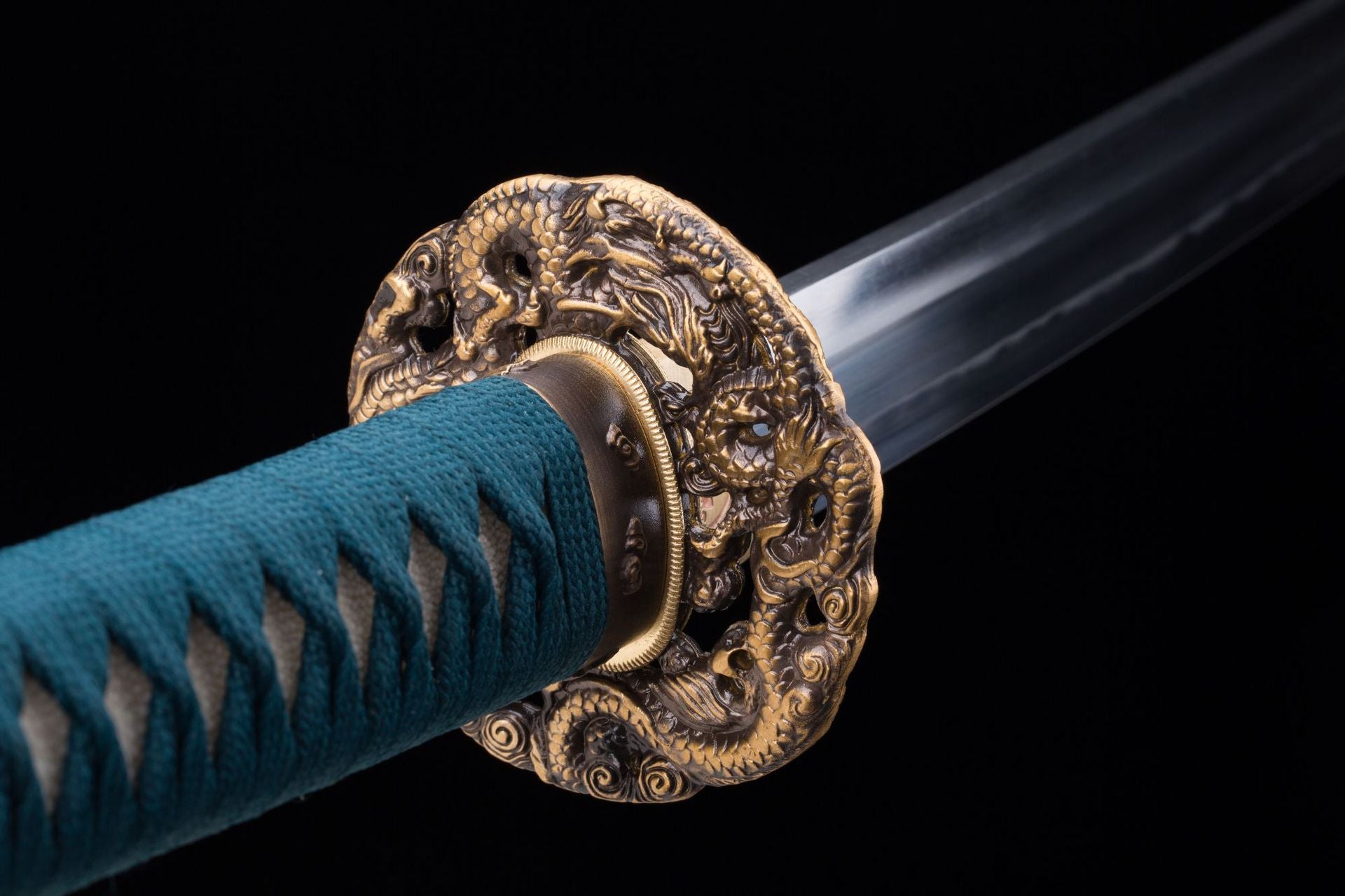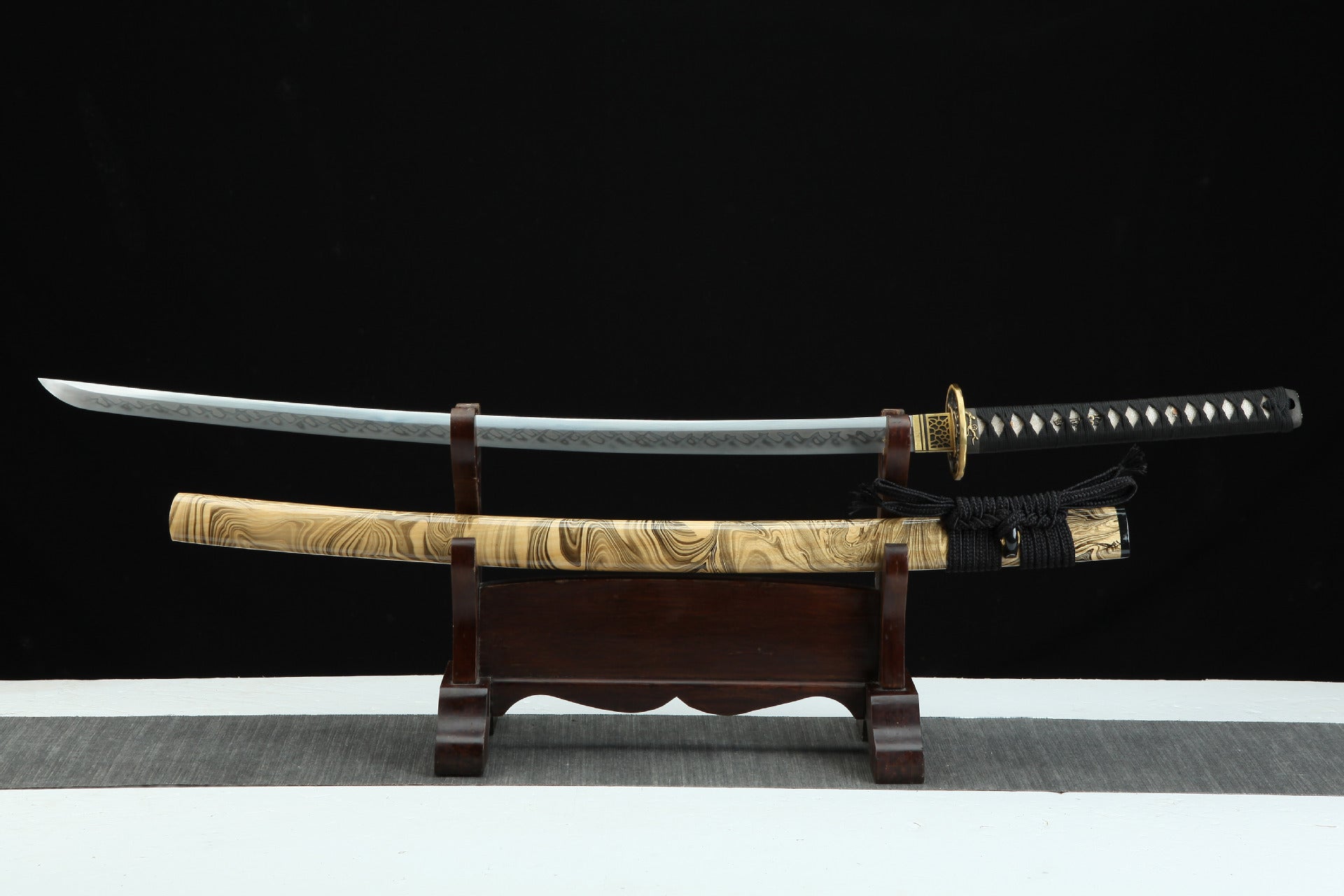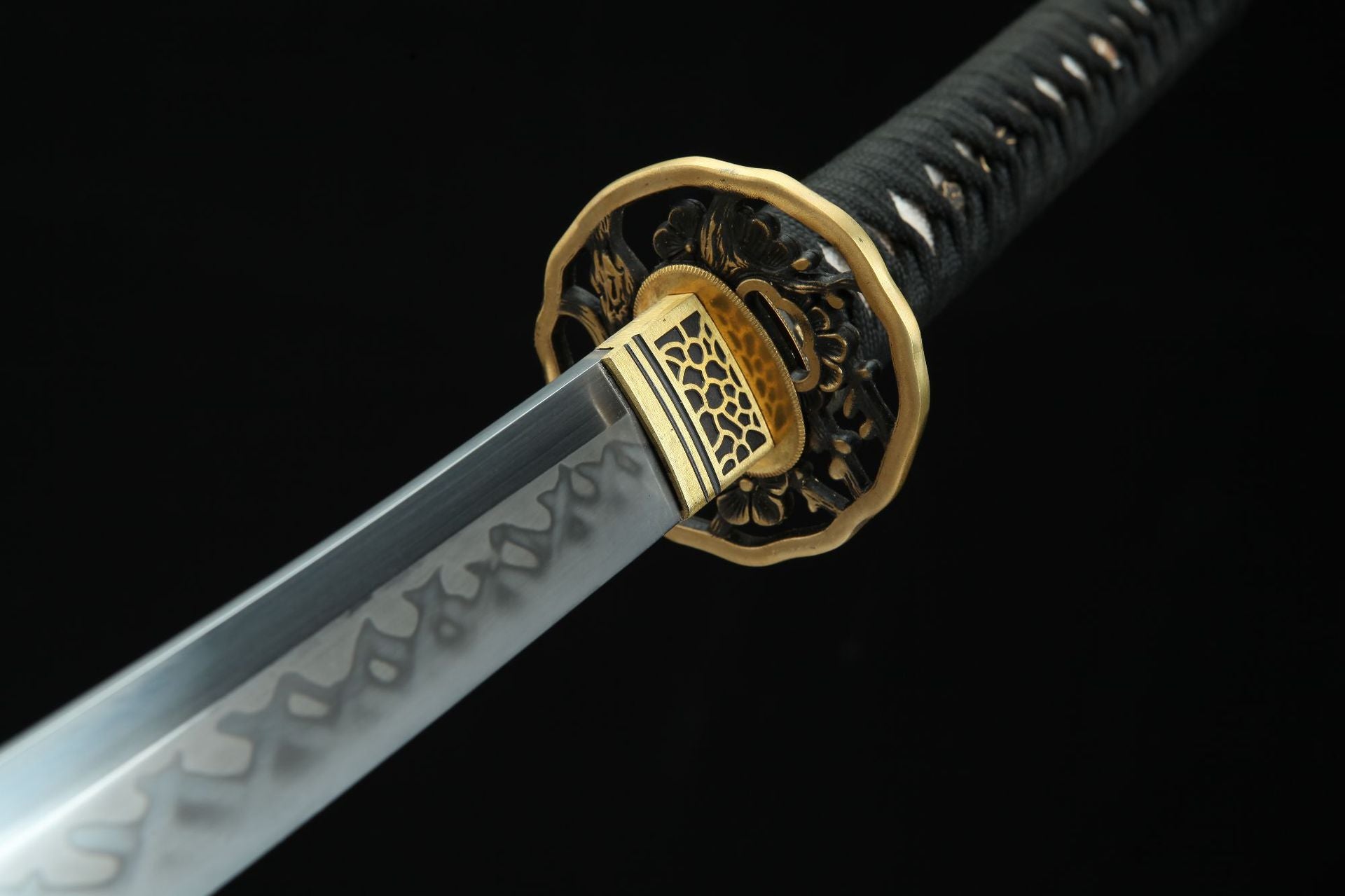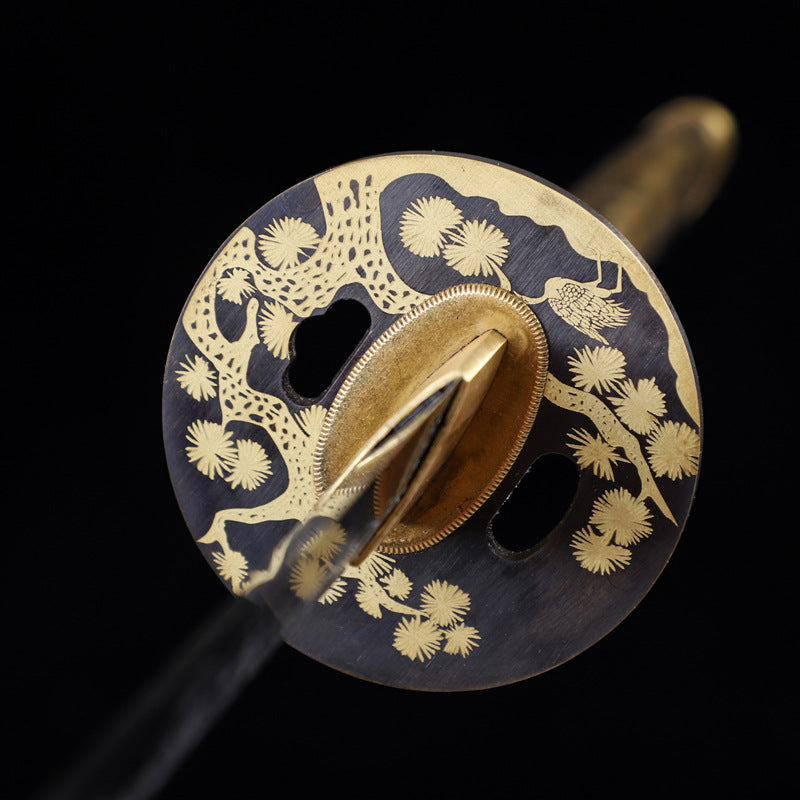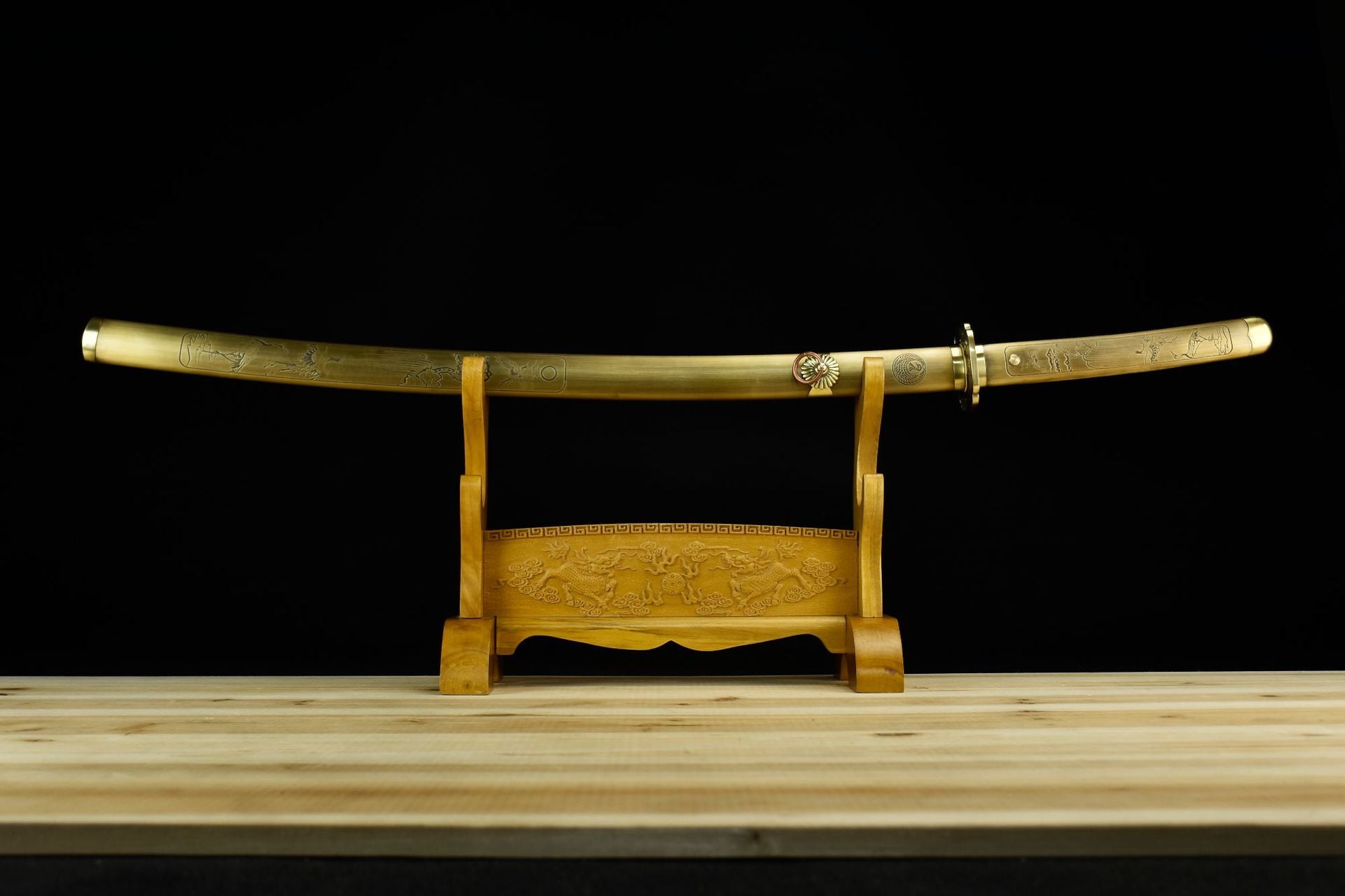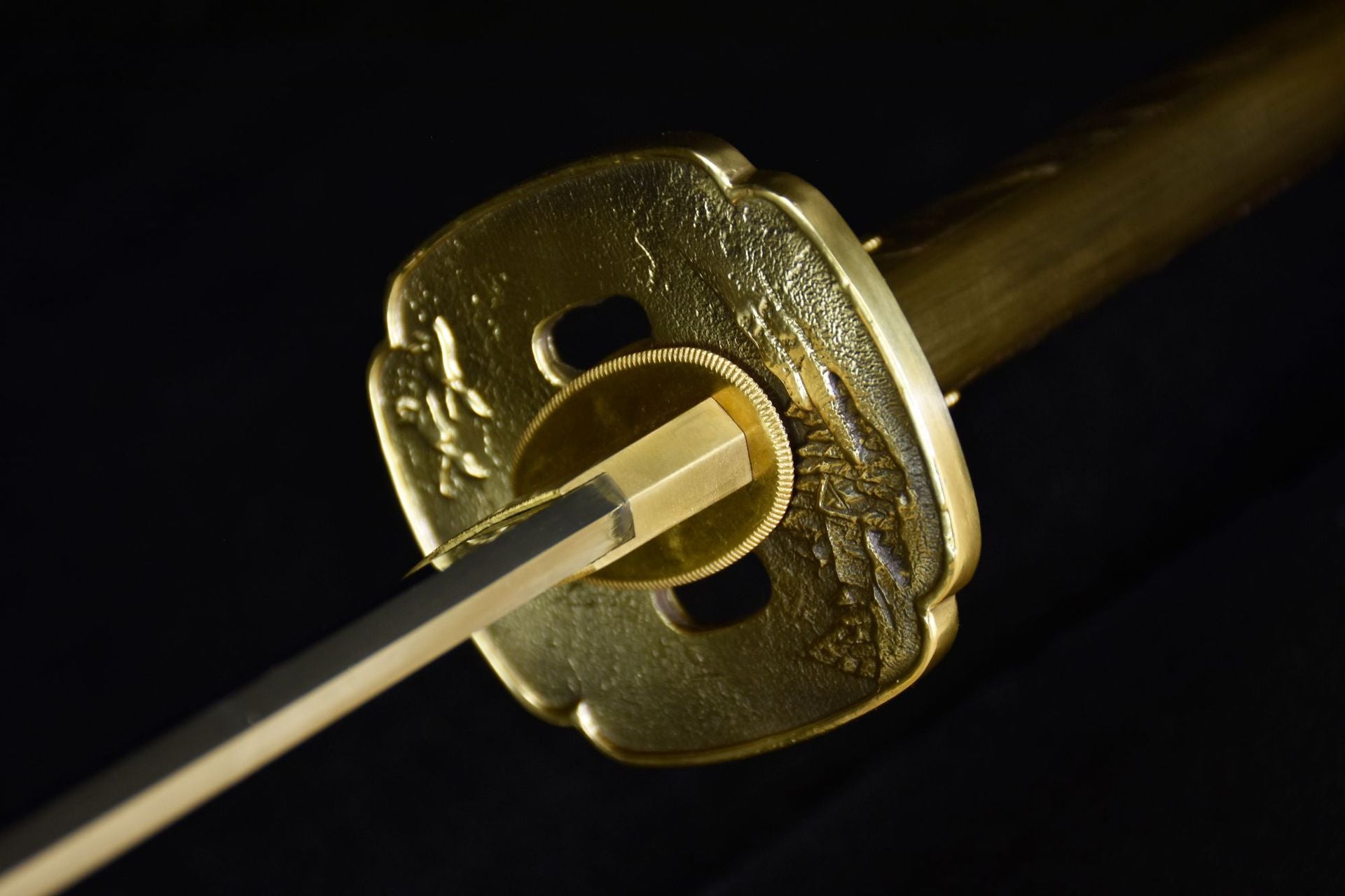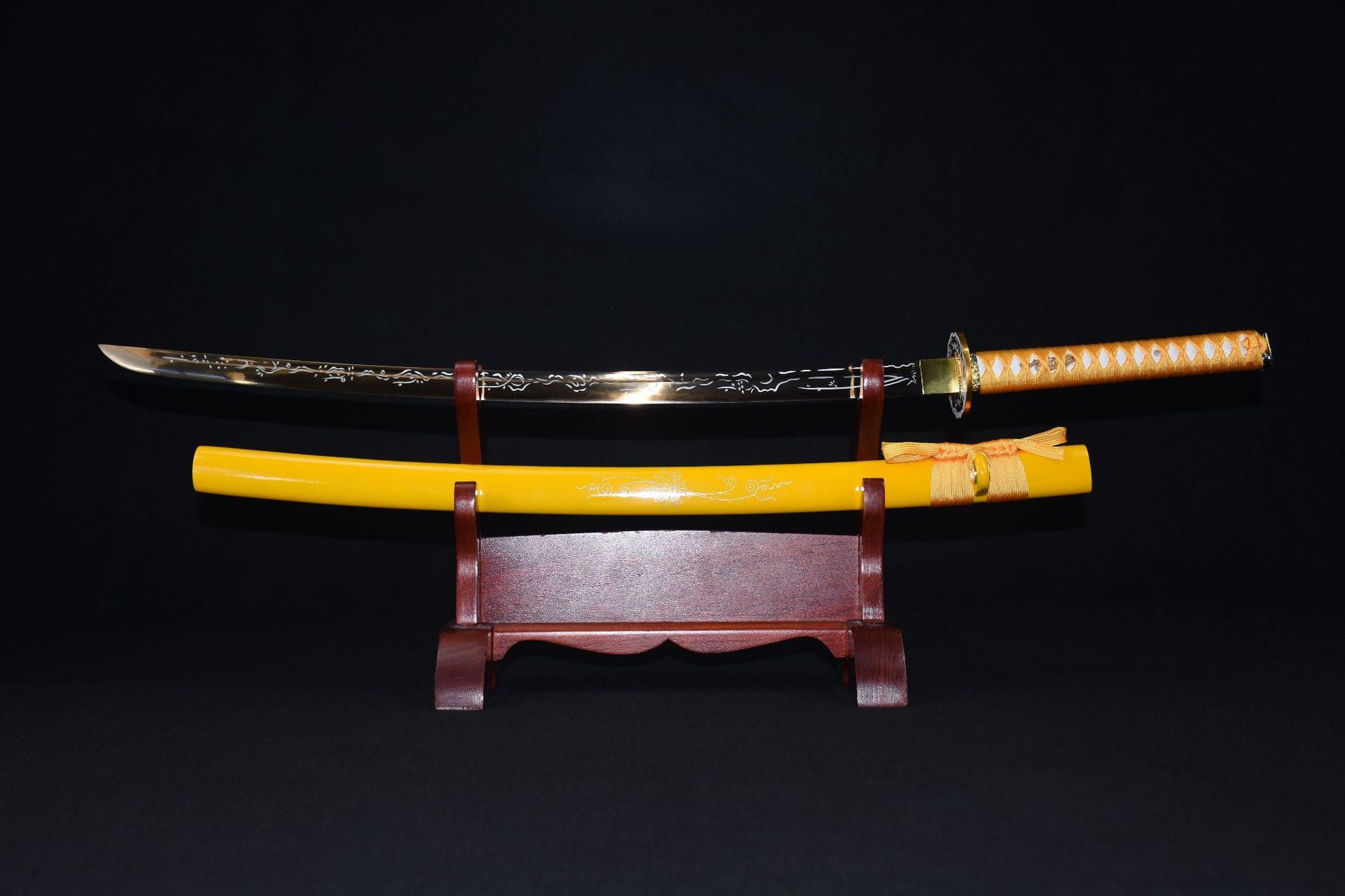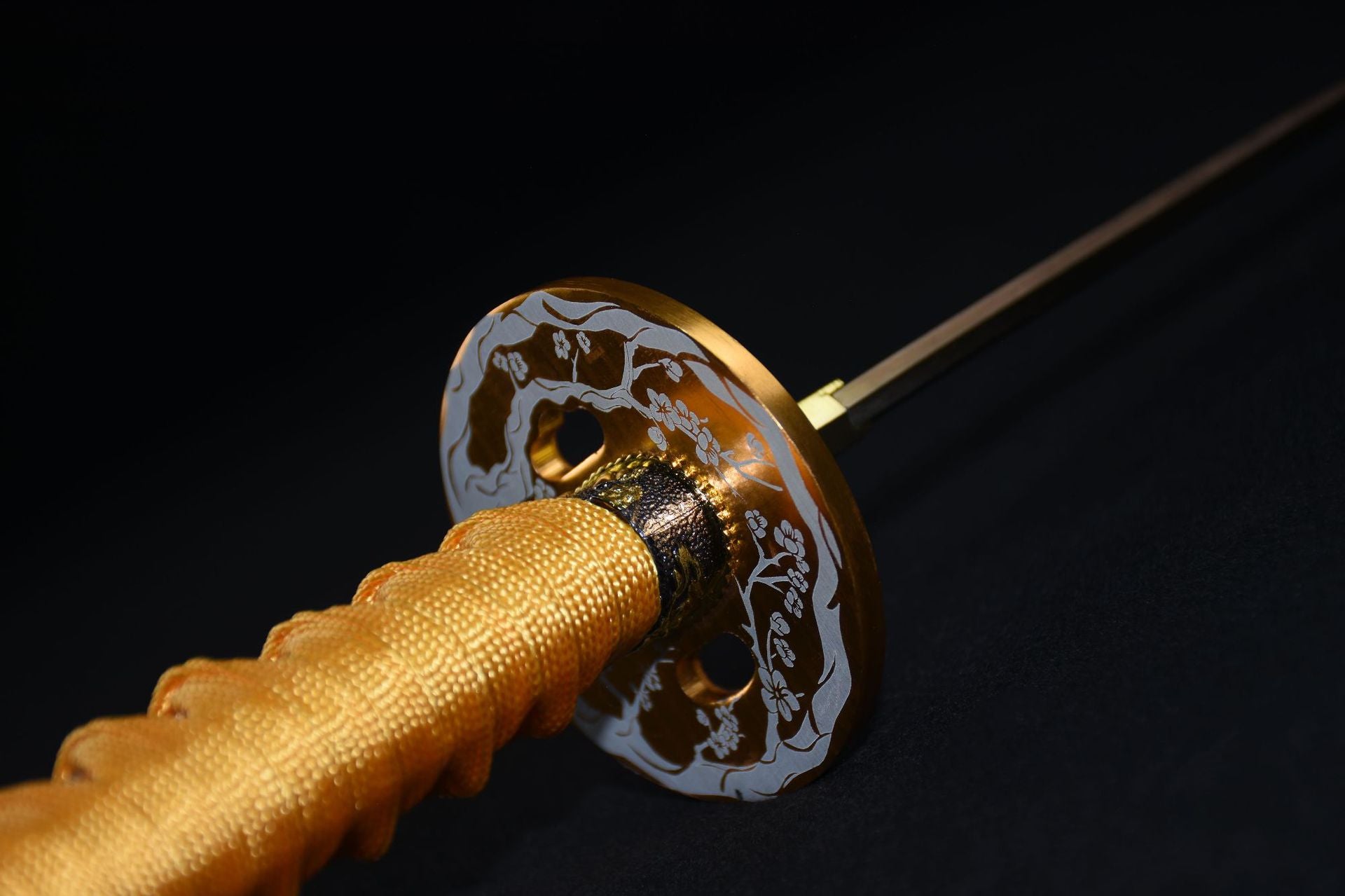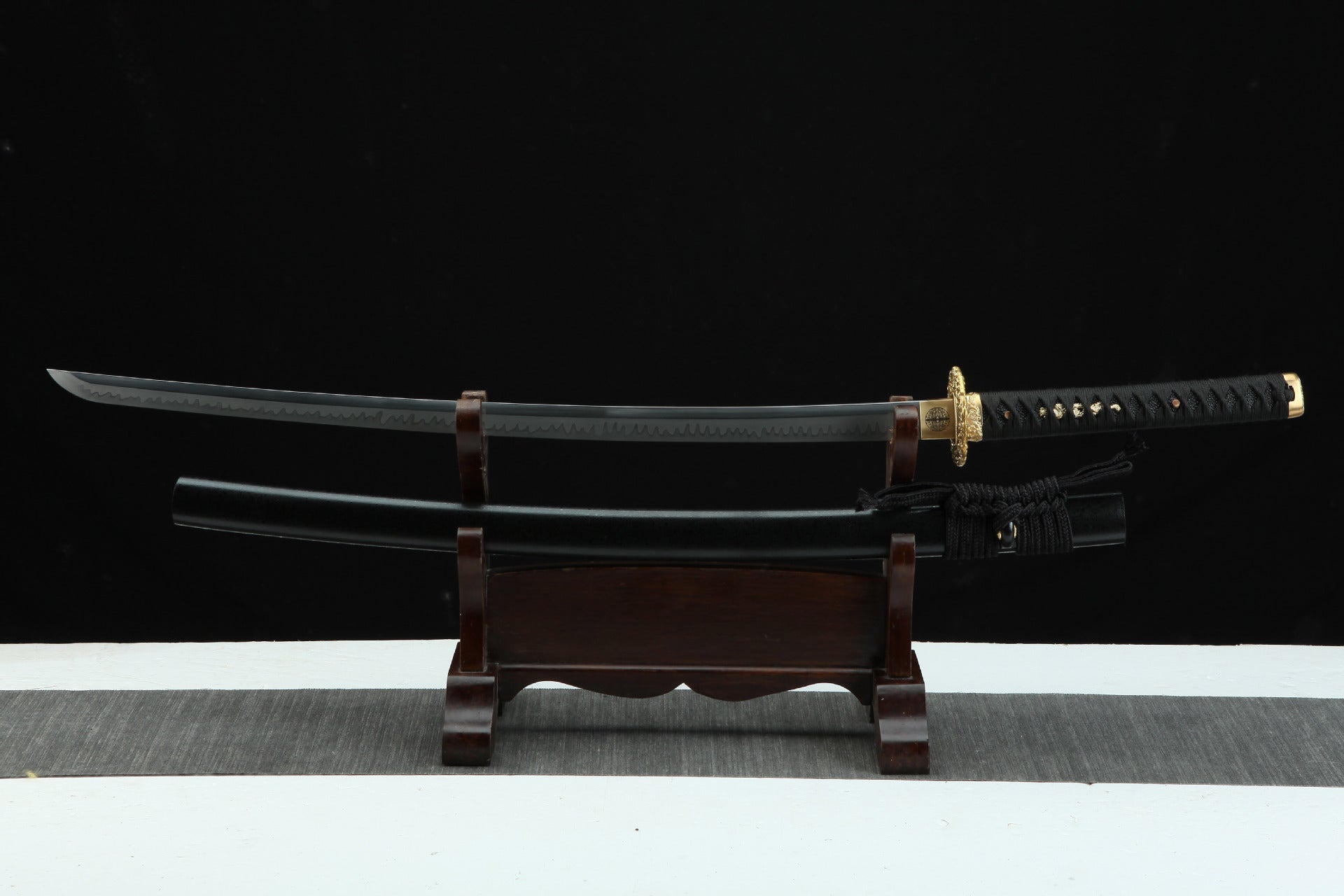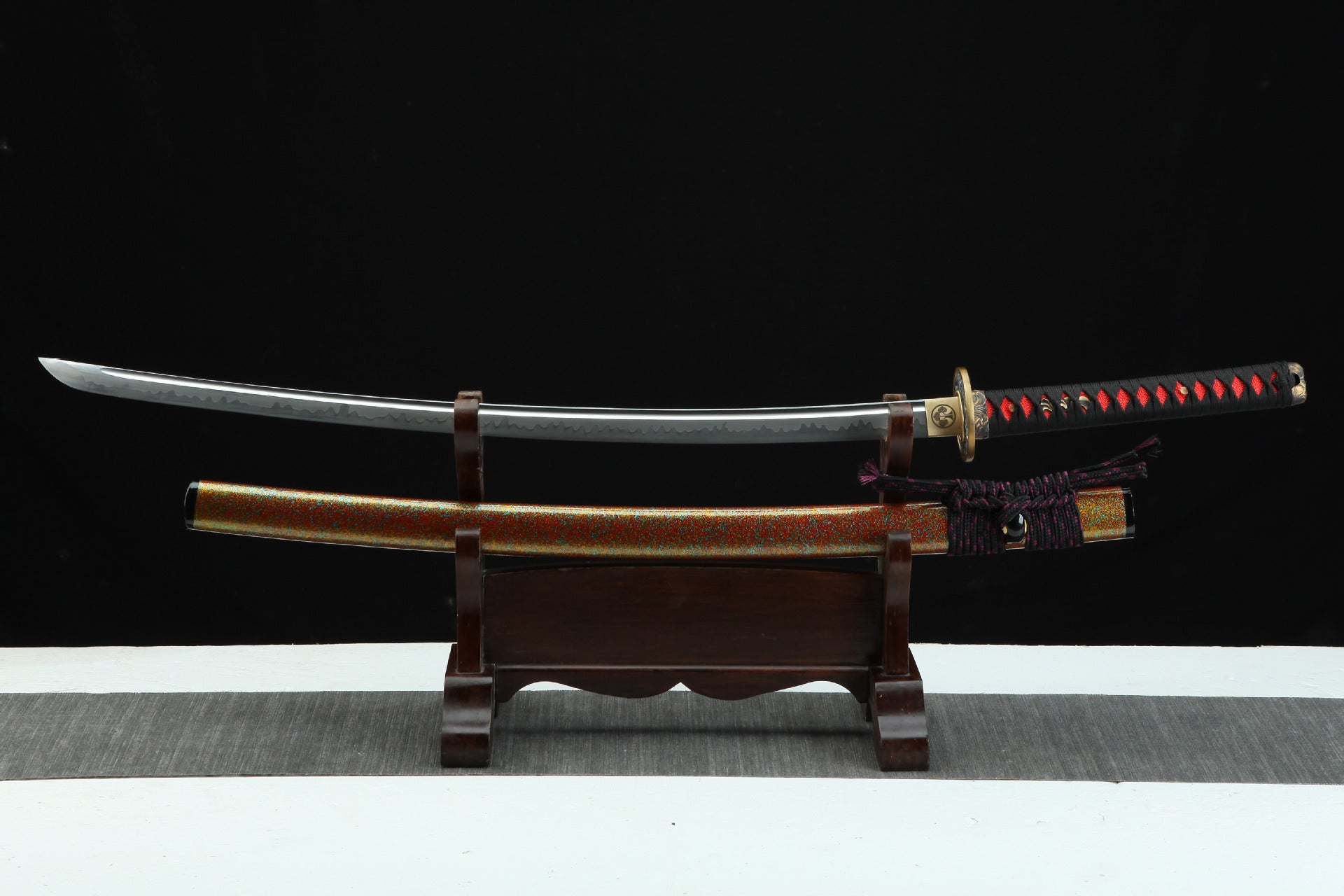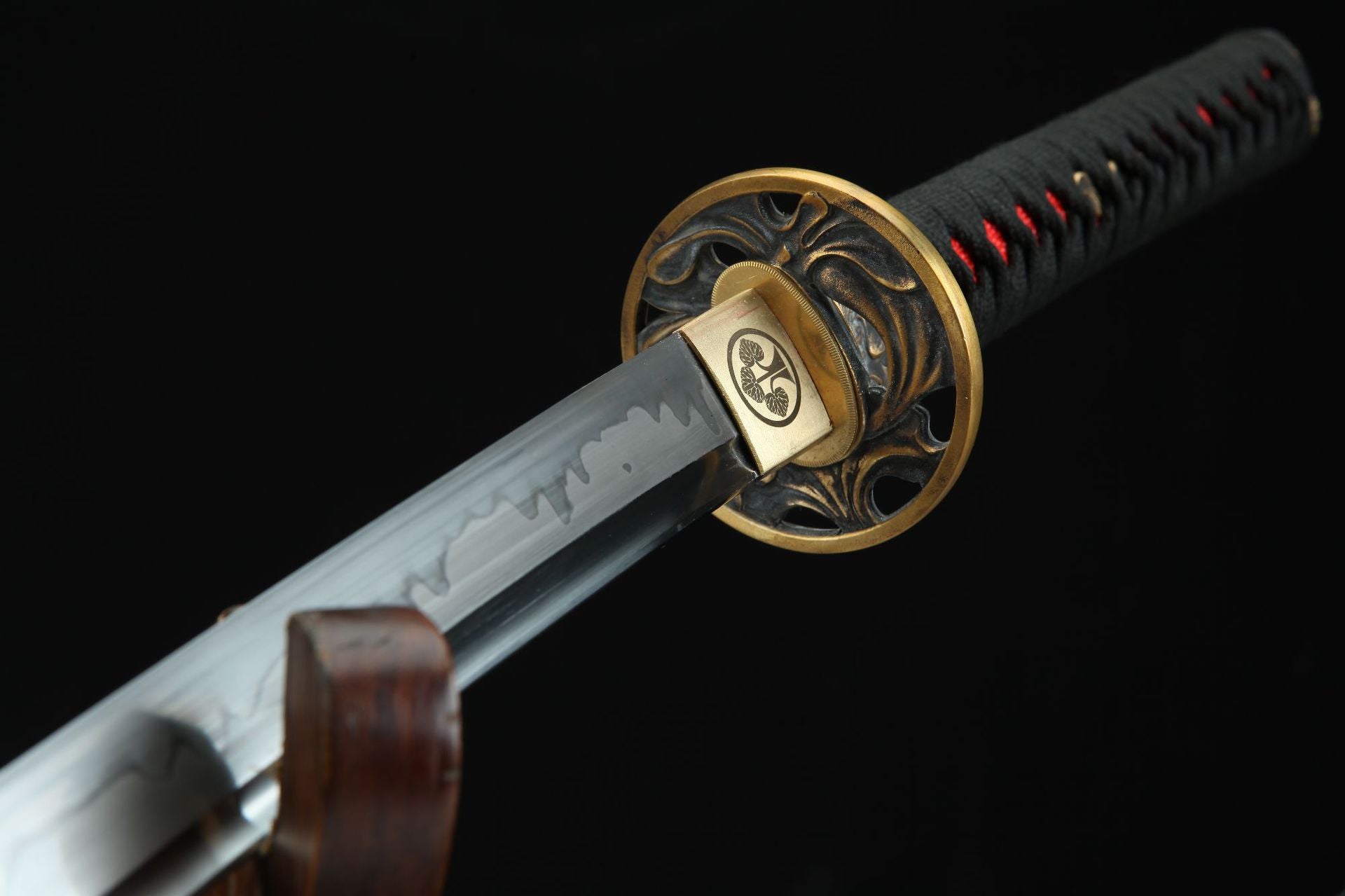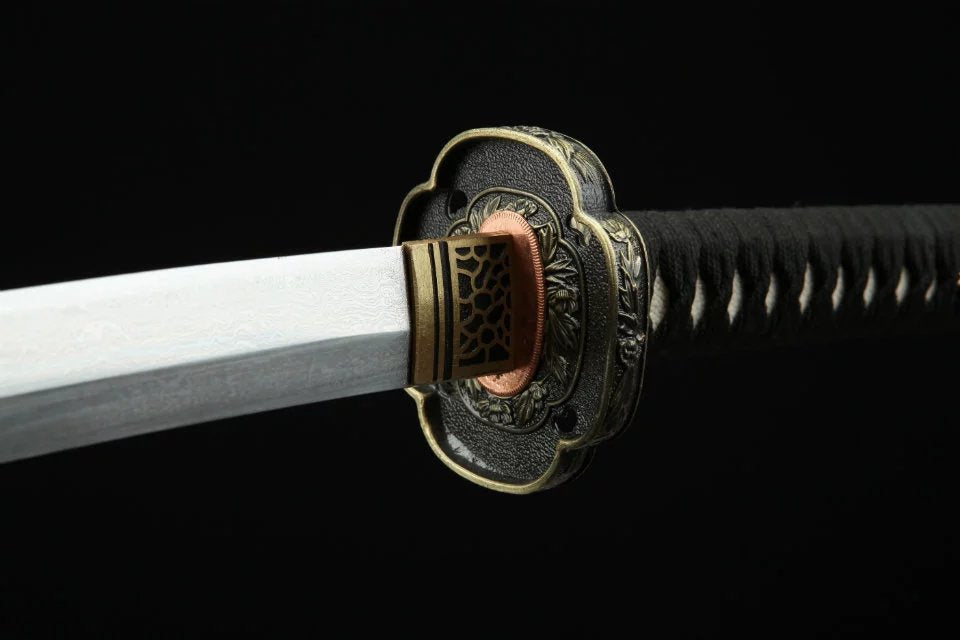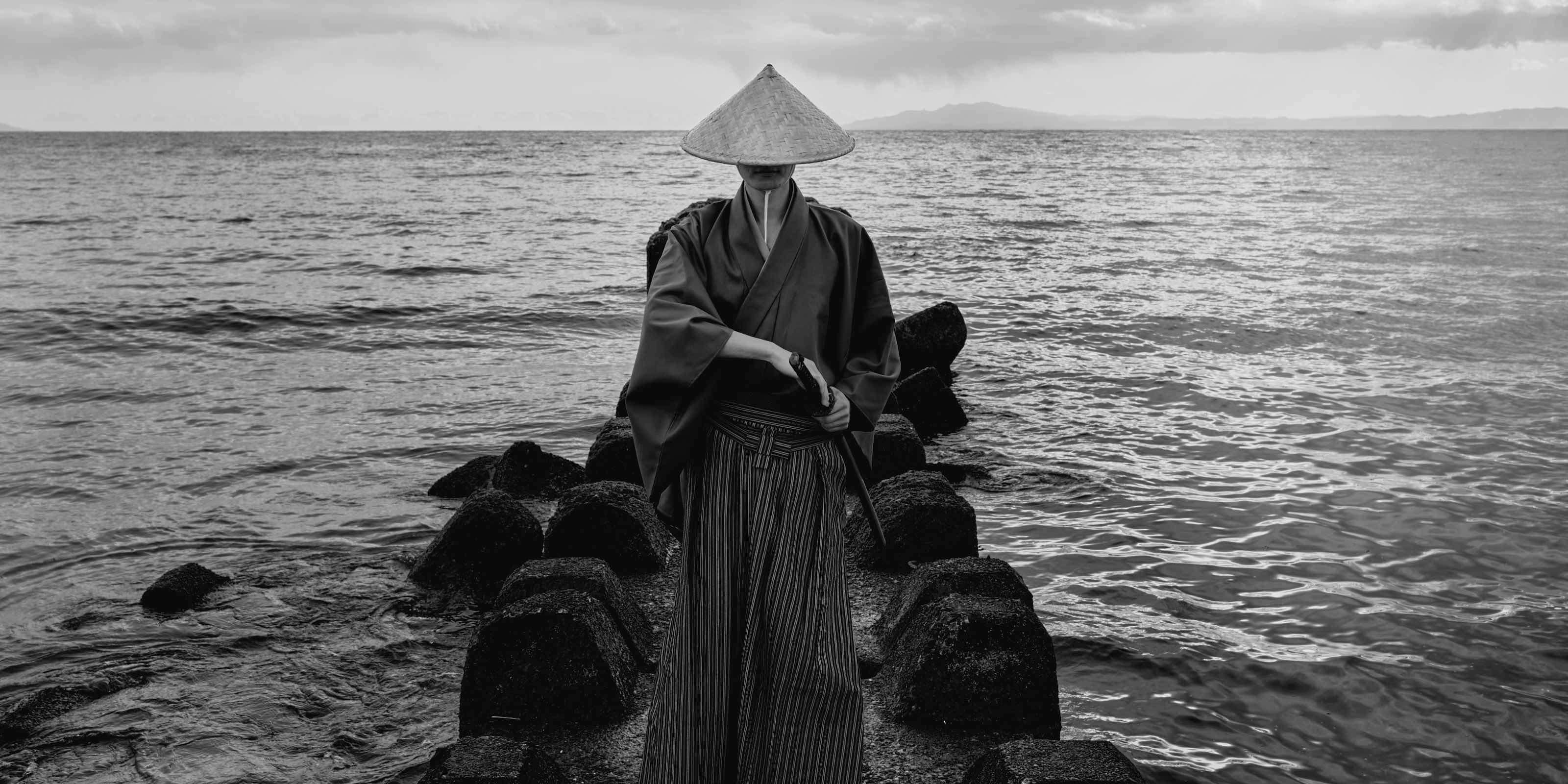Filters
Having a real katana is something truly exhilarating
The katana is the most iconic, influential, and popular type of Japanese sword (nihoton) in modern times, among all traditional Japanese blades.
Historically, the katana could only be worn by samurai and feudal lords. Beyond its role as a weapon, a masterfully crafted katana served as a symbol of its bearer’s identity, honor, and status.
Explore our samurai sword series and add a genuine handcrafted katana to your collection. From traditional styles that honor centuries of craftsmanship to modern designs infused with innovation, our swords are built for both function and beauty. Make your choice, express your unique spirit and get ready to train like a rōnin.
Components of a Katana
Our katana swords consist of two main parts: the blade (katana-to) and the mountings (koshirae).
Katana blade. All of our katanas are full-tang. The blade of a katana refers strictly to the sharpened edge and the tang (nakago) hidden within the handle, excluding all other fittings.
Koshirae. The koshirae is the complete set of fittings for a Japanese sword, including the saya (scabbard), tsuba (guard), tsuka (handle), sageo (cord), fuchi (collar), kashira (pommel), and more. A single blade can be paired with different koshirae, or even customized. We offer hundreds of swords already matched with koshirae, available in a wide variety of styles — from simple and refined, to ornate, traditional, or modern designs.
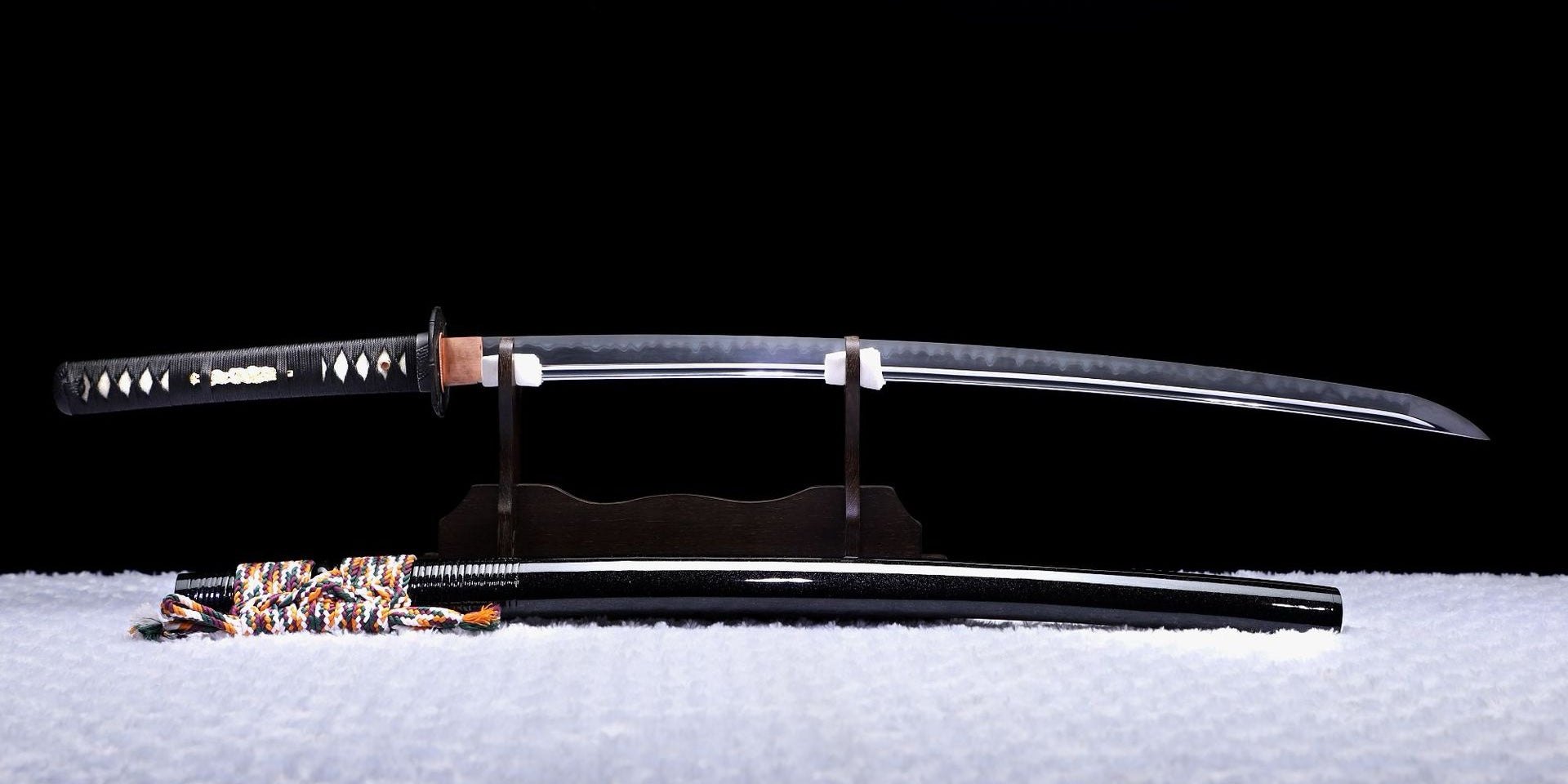
Katana mountings (koshirae)
This is an introduction to the main parts of the katana, click to learn more about the detailed introduction of guide to katana terms and meanings.
Tsuka
The handle of the katana, where the sword is gripped.
Tsuka-maki
The decorative cord wrapping on the handle, providing grip and style.
Tsuba
The guard between the blade and handle, protecting the hand.
Blade
The blade part of the katana is partially deeply embedded in the handle.
Hamon
The pattern on the blade, created during the tempering process.
Kissaki
The tip of the blade, designed for precision thrusting and cutting.
Saya
The wooden scabbard that houses the blade when not in use.
Sageo
The cord used to tie the saya to the belt or obi.
How to choose the steel for a katana?
Feeling unsure about which katana is right for you?
Compare the differences between various steel types for katana, and choose the one that suits you best.
High hardness, commonly used for making traditional samurai swords, with excellent sharpness and edge retention ability. |
|
The blade surface has a unique wavy or patterned design, which is very suitable for collection. |
|
Further improved hardness and wear resistance. The blade edge is extremely sharp and can maintain its sharpness for a long time. |
|
High cost-performance, strong toughness, good shock resistance, less likely to break or crack. |

